





























Thr ve Health and Wellness Magazine for Rural Central Texans Summer 2023 Swing Improve Your Men’s Health Saddle Up! 10 Checkpoints BPH • Snoring • Skin Daddy Dos and more! GrilLIN’ HEMS RESCUE Heroes Logyn’ s Summer workout









36 Improve Your Swing



7 SAFETY Grill 101 Healthier BBQ Sauce
NUTRITION Summer Grillin' Benefits of Corn & Beef Lean Beef
10 DIETARY
Fire Up the Flavor Take the Bait Peach Barbecue Chicken
12 PARENTING
Hats Off to the Dads Daddy (and Mommy) Dos
Support the team that cares for you.
One of the trademarks of a progressive community is strong commitment and support of high quality healthcare services. Central Texans are fortunate to have outstanding healthcare professionals and facilities in Hamilton, Hico and Goldthwaite, thanks to the foresight, tenacity and stewardship of many of our citizens over the years.
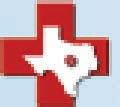

The Hamilton General Hospital Healthcare Foundation, 501(c)3 organization, maintains the legacy of ensuring vital healthcare services now and for the future for Hamilton County and surrounding areas.

Thanks to the generosity of our donors, the Foundation has been instrumental in providing grants for needed equipment and services like the new 3D digital mammography machine and annual community health fair.
Join us in supporting the healthcare team that cares for you. Donate today.
HAMILTON GENERAL HOSPITAL HEALTHCARE FOUNDATION
Providing excellence in rural healthcare



P.O. Box 788 • Hamilton, Texas 76531
Donate online at hamiltonhospital.org/hghh-foundation.
14 EMERGENCY HEMS to the Rescue
18 FAITH
Make It Count!
20 COMMUNITY A Tye to Athletes Logyn's Heroes
FEATURE No Country for Old Men
10 Checkpoints to Saddle Up!
28 SPECIALISTS
Sweet Tea From the Lab
4 An HHN publication Thrive | Hamilton Healthcare System
24 8
ABOUT THE COVER Jeff Ensor, President of Perry Country Club Board of Directors, enjoys the annual Harry Bullard Golf Tournament. On page 36, Tyner Haile demonstrates moves to improve your swing.
PHOTOS BY KIM HINTON














42 5 Hamilton Healthcare System | Thrive An HHN publication Published by Hamilton Herald-News 101 N. Rice Street | Hamilton, TX 76531 254-386-3145 | hhnpaper.com contents Summer 2023 Ray’s City Drug Jeff and Nikki Alsabrook, owners • Cindy Kinsey RPh/PIC • David Cleveland RPh 105 E Henry St in Hamilton • (254) 386-3121 Monday - Friday 8 aM - 5:30 pM • Saturday 8 aM - noon Friendly Faces • Quality Care Gifts • Seasonal Decor • Circle E Candles 40 PREVENTION Snoring: It's Annoying Signs of Sleep Apnea INTEGRATIVE Healing Energy 44 VOLUNTEERS Serenity Garden at HGH 46 DIRECTORY Community Resources Advertisers 34 30 SKIN HEALTH The Truth About Men's Skin 32 HEALTHY MIND MENtal Health It's Okay to Ask for Help FINANCE Pay Off Debt Medical Debt Solutions 38 SERVICES Stress Test




Grill 101
Don’t let food poisoning ruin the barbecue. Use a thermometer to ensure meat is cooked to a safe internal temperature.


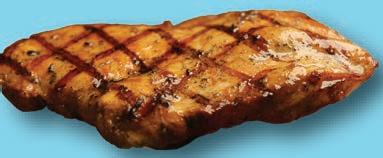








STEAKS & CHOPS FISH
Ensure a safe and enjoyable grilling season with these tips.


take it outside

Only use propane and charcoal BBQ grills outdoors. Place the grill well away from the home, deck railings and out from under eaves and overhanging branches.
Keep It Clean
Avoid flareups by removing grease buildup. Use a moist cloth or paper towel to clean the grill surface before cooking. Avoid wire bristle grill cleaning brushes. Try cleaning warm --not hot -- grill grates with a wad of aluminum foil, pumice stone or bristle-free brush.
get it started
Always make sure your gas grill lid is open before lighting it. Start a charcoal fire by using newspaper as fuel with charcoal chimney starters. If you use a starter fluid, use only charcoal starter fluid and never add it to the fire. Keep charcoal fluid out of the reach of children and away from heat sources.
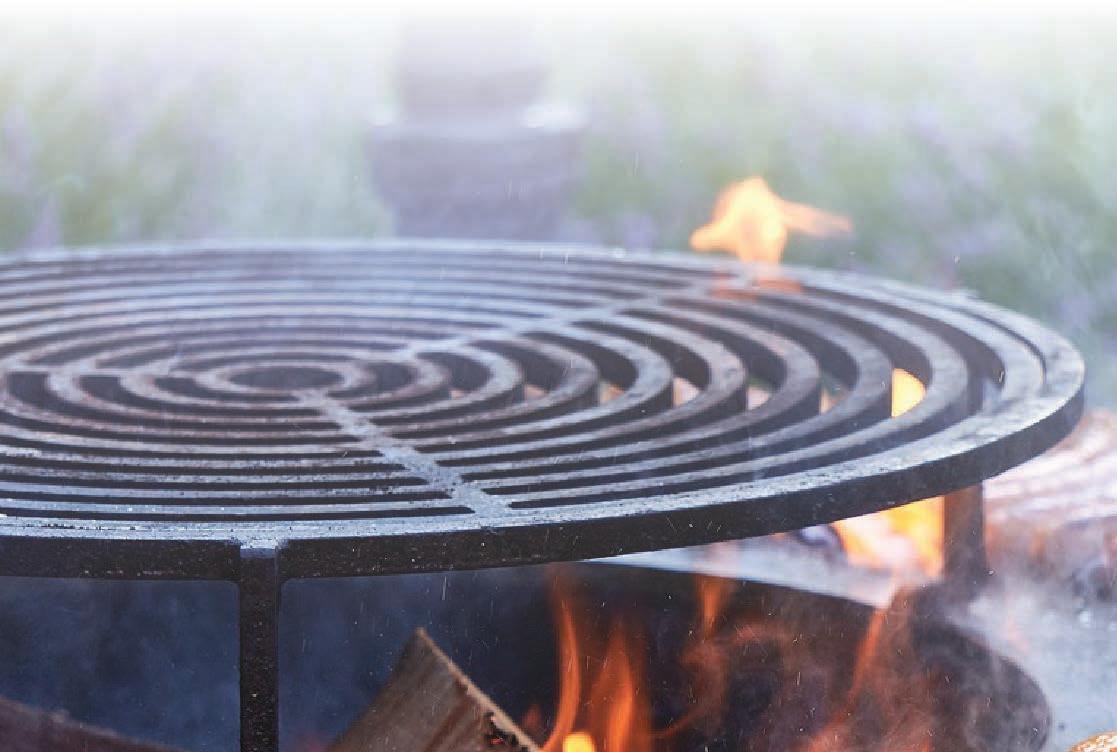
BURGERS POULTRY

Chill
Keep meat, poultry and seafood refrigerated until ready to grill. Always marinate food in the refrigerator. When transporting, keep at 40°F or below in an insulated cooler. Never thaw or marinate meat, poultry or seafood on the counter.
keep ‘em sepArated

Throw out marinades and sauces that have touched raw meat juices, which can spread germs to cooked foods. Use clean utensils and a clean plate to remove cooked meat from the grill. Do not place cooked meat back on a plate that held raw meat.
SAUSAGES & HOT DOGS

Put It Away
Keep cooked food at 140°F or warmer until it’s served. Refrigerate or freeze leftovers within two hours of cooking -one hour if above 90°F outside.

Healthier BBQ
sauce
INGREDIENTS:
1 large onion, chopped
2 cloves garlic, minced
1 cup tomato sauce
¾ cup water, divided






⅓ cup maple syrup
2 Tbsp apple cider vinegar
1 Tbsp balsamic vinegar
1 Tbsp molasses



1 tsp smoked paprika
¼ tsp chili powder

2 tsp tamari or soy sauce
1 tsp fine sea salt
Pinch black pepper




⅛ tsp cayenne pepper, optional
3-4 drops liquid smoke, optional

INSTRUCTIONS:
1. Preheat a sauté pan over medium heat. Cook the chopped onion for 7 to 10 minutes, stirring occasionally. Allow caramelization to develop in the pan.
Made from whole food ingredients, this easy BBQ sauce recipe is vegan, refined sugar-free and gluten-free, with half the calories of store-bought. National
2. Once the onion is golden, add the minced garlic and cook for about 30 seconds, stirring constantly so the garlic doesn’t burn. Deglaze the pan with ¼ cup of water.
3. Add the remaining ingredients. Stir to combine. Bring to a simmer and cook 3 to 5 minutes or until slightly reduced.
4. Remove from heat and let cool 15 minutes. Transfer to a blender and blend until smooth. Pour into a jar and allow to cool. Cover and refrigerate until ready to use.
7 Hamilton Healthcare System | Thrive An HHN publication safety
Fire Prevention Association Centers for Disease Control
145°F 145°F 160°F 165°F 165°F
grillin' Summer
Health Benefits of Corn
Choose lower fat toppings such as lime juice, chopped fresh cilantro, chili powder or reduced-fat sour cream.
corn cob 3 Ways to Grill
on the




Nothing says summertime quite like corn on the cob. Try these three ways of grilling corn on the cob to find your family's favorite.







BLACKENED - THE BEST WAY!
This easy method makes it come out charred, smoky, tender and sweet. It's our favorite way to cook it, but it does dry out more than the next two methods.
1. Preheat the grill to medium high: that’s 375 to 450 degrees.
2. Husk the corn or tie back the leaves to make a handle.
3. Rub oil lightly on all the cobs.
4. Grill the cobs directly on the oven grates for 12 to 15 minutes, turning until blackened on all sides.
IN THE HUSK - THE UNIQUE WAY!
FOIL - THE EASY WAY!
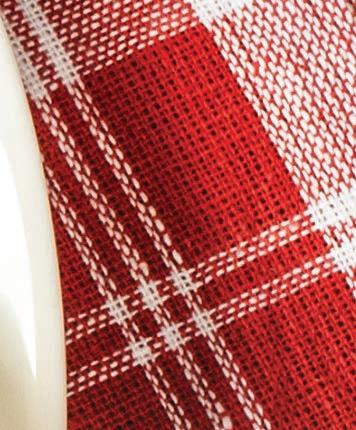

Wrap it in aluminum foil, and it’s mostly hands off while you grill the rest of the meal. This way makes the moistest corn, but it has less smoky grill flavor.
1. Preheat a grill to medium high heat: that’s 375 to 450 degrees Fahrenheit.
2. Place the corn on foil and season. Rub it with olive oil, cover with salt and pepper and then place a few pats of butter on top.
3. Wrap the corn in foil loosely. Poke a few holes in the aluminum foil to allow air to escape.


4. Grill 20 to 25 minutes, turning occasionally, until it's bright yellow.
It’s easy and results in deliciously moist, sweet flavor. It takes a little longer, but the flavor is like a combination between the two methods above: it comes out moist with a subtly charred flavor.

1. Remove the silk. Pull back the husks, remove the silk of the corn, then pull the husks back up.





2. Soak the cobs for 20 minutes. This prevents them from catching fire.
3. Preheat the grill to medium high: that’s 375 to 450 degrees.
4. Grill for 20 to 22 minutes. Turn them to get even blackening on the outside of the husk. Test if it's done by checking one cob to make sure it's bright yellow.
Christie Keay County Extension Agent




One of the world's most popular grains, corn is high in fiber and many vitamins, minerals and antioxidants.

Promote colon health

A good source of fiber, corn promotes the growth of "good bacteria" in the gut. These bacteria produce short-chain fatty acids that may help prevent colon cancer. To get the most benefit, eat fresh corn, popcorn and foods containing whole-grain corn.

Protect eyesight
Corn is high in vitamin A, particularly lutein and zeaxanthin, which are beneficial for eye health and may help prevent age-related macular degeneration.

Manage weight
The most filling snacks are those high in protein and fiber, like popcorn. One cup of air-popped, unbuttered popcorn provides 31 calories, 1 gram protein and 1 gram of fiber. Popcorn is a whole grain snack that's minimally processed when you make it fresh.


42.8 mcg
3.3g PROTEIN
88 CALORIES MEDIUM EAR
19g CARBS
2g FIBER



FOLATE
8 An HHN publication Thrive | Hamilton Healthcare System
grillin'
Health Benefits of Lean Beef
Fresh, lean beef is rich in various vitamins and minerals, especially iron and zinc. Therefore, moderate intake of beef can be recommended as part of a healthy diet.
Build and replenish muscles
A 3-ounce serving of lean beef provides 25 grams of high quality protein. Meat is one of the most complete dietary sources of protein containing all nine essential amino acids needed for the growth and maintenance of your body. It may be of particular benefit after surgery and for recovering athletes. In combination with strength exercise, protein also helps maintain and build muscle mass.

Support immune system
Beef is very rich in zinc, a mineral that is important for body growth and maintenance. Zinc is essential in the creation of DNA, growth of cells, building proteins, healing damaged tissue and supporting a healthy immune system.


Produce energy


Beef is high in vitamins B6, B12 and niacin. Vitamin B6 is important for blood formation and energy metabolism. Animal-derived foods, such as meat, are the only good dietary sources of vitamin B12, an essential nutrient that is important for blood formation and your brain
niacin (vitamin B3) has various important functions in your body including supporting energy production and metabolism.

2.5mg
Lean Beef
When shopping for lean red meat, look for:


• beef and pork labeled “loin” or “round,” as these have the least fat
• beef top sirloin, strip or tenderloin steak

• bone-in pork loin chops
• “choice” or “prime” cuts of beef with excess fat cut off


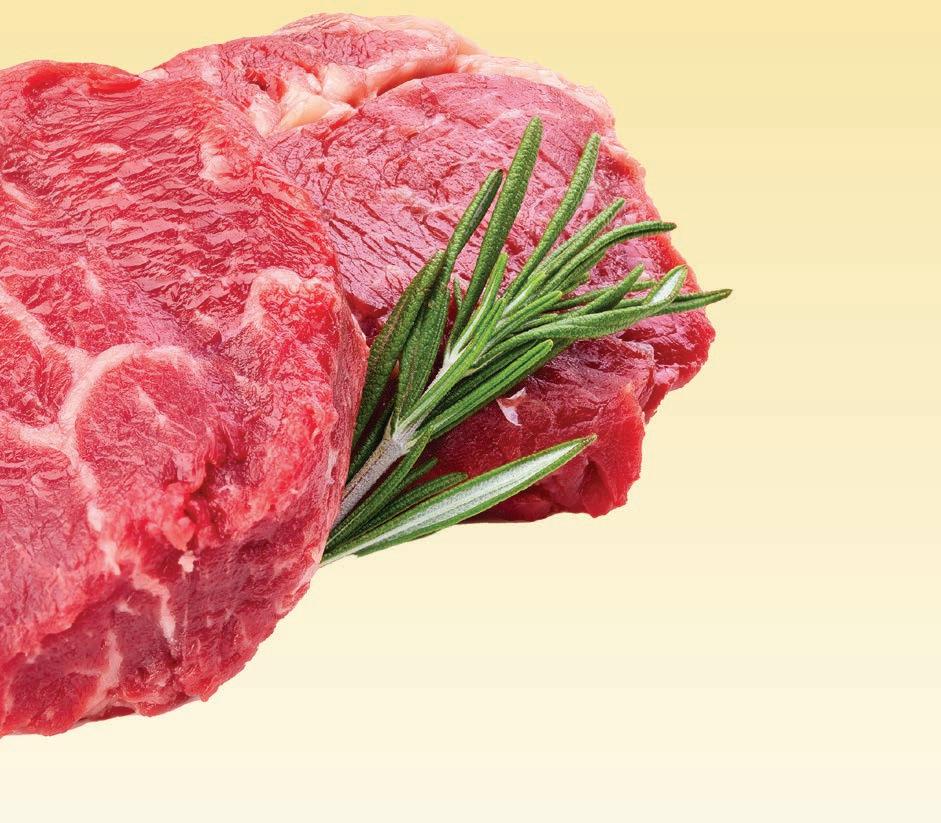
• 93% lean ground beef for hamburgers or meatloaf Texas

Beef
kabobs
Serves 5
Combine lean beef with seasonal summer veggies for the perfect outdoor meal.

INGREDIENTS:


1lb extra lean beef steak
¼ tsp sea salt
¼ tsp minced garlic
1 medium green bell pepper, cut into 20 squares
10 cherry tomatoes
10 small fresh mushrooms
2 small yellow squash, cut into 10 slices
Non-Stick cooking spray
INSTRUCTIONS:
1. Cut meat into 20 (1 inch) cubes.
2. Thread meat, green pepper, tomatoes, mushrooms and squash alternately onto 5 (12-inch) skewers.

3. Sprinkle evenly with salt and garlic.
4. Coat grill rack with cooking spray; place on medium hot grill (350 to 400 degrees)
5. Place kabobs on rack and grill uncovered, turning once for 10 minutes or until beef reaches a minimum of 145 degrees.
Per serving: 140 calories, 4.5g total fat, 1.5g saturated fat, 0g trans fat, 60 mg cholesterol, 180 mg sodium, 5g total carbohydrate, 2g dietary fiber, 3g sugars, 22g protein, 21 mg calcium, 2 mg iron, 685 mg potassium.

nutrition
25 g PROTEIN 175 CALORIES 3 OZ. LEAN
IRON Submitted by
9 Hamilton Healthcare System | Thrive An HHN publication
Beef Council
Fire Up the dietary Healthy Grilling Tips for Summer Take the Bait and
lose the weight for good
orget the fads and yo-yo diets, the key to losing weight and keeping it off is lifestyle changes based on healthy eating and regular physical activity.
Hamilton Healthcare System offers a nutrition counseling and weight loss program that works!

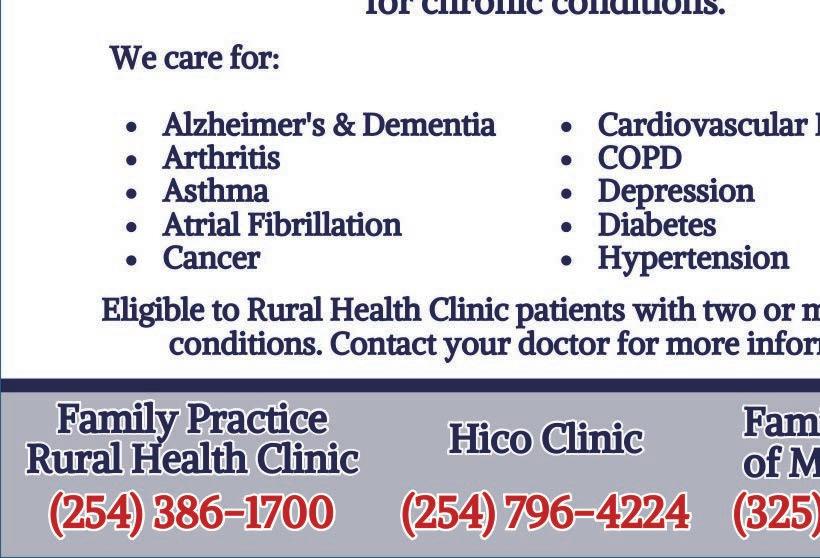

"The program involves frequent 1:1 visits to check weight and monitor progress with goals," said Krista Lindley, the registered dietitian who coordinates the program. "We cover one nutrition topic or dietary approach at a time."

Over the course of 18 to 22 visits in a year, participants develop healthy habits that stick. There are no shakes, pills or meal replacements; just real food.
"The program is based on the Mediterranean Diet, an emphasis on lean proteins, high fiber grains and more plant-based foods," said Lindley. "An activity plan will be created based on individual needs and abilities."
The best part? The program may come at no cost to participants.
"Insurance typically covers those with a BMI over 30, but I have had some insurance plans cover a lower BMI," she said.






For more information about the program, call Krista at 254-3861531 or visit hamiltonhospital.org.
Why is grilling a healthy option for preparing food?
Grilled meats may have less fat content because fat drips off during the cook, and shorter cooking time results in less moisture and vitamin loss from vegetables, retaining their nutritional content.
What are some healthy tips for grilling?
Start with a leaner protein choice and avoid drowning proteins in salty and sugary sauces. Consider using whole grain buns or switching out the high calorie usual sides dishes, like potato salad and mac 'n cheese, for grilled sweet potato fries, vegetable kabobs or grilled pineapple slices.
What are the healthiest proteins for grilling?

Seafood offers a wide variety of tasty and healthy grilling options.

In the heart of beef country, what are the healthiest cuts of red meat for the grill? For the leanest cuts of beef lowest in saturated fats, opt for a round or sirloin. Grass-fed beef will also have an overall leaner profile compared to grain-fed.
What is the difference between saturated fat and unsaturated fat?
Unsaturated fats are more heart-healthy than saturated fats. Saturated fats are primarily found in animal products like meats and butter, and unsaturated fats are found more in plant-based foods and fish.
What are some ways to incorporate healthier vegetables and fruits into the backyard barbecue?

Cole slaw is a great veggie
side dish but usually drowned in mayonnaise. Instead, try a vinegar-based slaw or cut the mayo with Greek yogurt. Grilling fruit brings out the natural sweetness. Try adding a fruit salsa to your grilled seafood for some extra color and a punch of flavor to your dish.
Are there pitfalls to watch for in marinades, rubs and sauces?
So many of these rubs and sauces are very high in salt and sugar. Homemade recipes can be tweaked using less salt and sugar and rely on other flavorforward seasonings.
Krista Lindley, MS, RD, LD, CDCES Diabetes Coordinator

10 An HHN publication Thrive | Hamilton Healthcare System
the Flavor!
Summer Cookouts chicken Peach Barbecue
Punch up ordinary grilled chicken breasts with southern summer favorite peaches. This recipe uses garlic, vinegar and monk fruit sweetener to create a low sugar BBQ sauce full of flavor without the extra calories.
MAKE THE SAUCE:
1. Heat oil in saucepan over medium heat.
2. Add onion and cook until softened, about 2–3 minutes.
INGREDIENTS: for salad:
4 cups baby arugula
⅛ tsp black pepper
⅛ tsp kosher salt
1½ tsp olive oil
1 small peach, halved
2 tbsp olive oil
½ small lemon, juiced
2 tsp Splenda® Monk Fruit
Granulated Sweetener
¼ small red onion, sliced for sauce:
½ small yellow onion, minced
Serves 4
3. Stir in peaches and cook for five minutes.
4. Add ketchup, apple cider vinegar, salt, sweetener, Worcestershire sauceand garlic powder and bring to a boil.

4. Reduce heat to medium-low and simmer until peaches break down and sauce begins to thicken, about 10–15 minutes.

5. Carefully transfer peach mixture to blender and blend until smooth, about 1 minute.
MAKE THE CHICKEN:
1. Heat grill to medium. Brush grates with oil.
2. Pat chicken dry with paper towels.
3. Grill chicken, flipping occasionally and brushing with peach BBQ sauce until fully cooked and a meat thermometer reaches 165 degrees F, about 8–10 minutes.

Krista Lindley has worked as a registered dietitian and certified diabetes educator since 2012 at Hamilton Healthcare System. In addition to diabetes education, Krista also conducts nutrition and weight loss counseling. If you have a BMI of greater than 30, insurance may cover the cost of the program. For more information, call Krista at 254-386-1531.
2 med peaches, peeled and chopped
¾ cup sugar-free ketchup
¼ cup apple cider vinegar
¼ cup Splenda® Monk Fruit
Granulated Sweetener
1 ½ tsp Worcestershire sauce
½ tsp garlic powder
¼ tsp kosher salt
1 lb thin sliced boneless, skinless chicken breasts
Serving: 1 chicken breast and 1¼ cups salad
Per serving: 300 Calories, 12g total fat, 2 g saturated fat, 63 mg cholesterol, 550 mg sodium, 20g total carbohydrate, 3g dietary fiber, 14g sugar, 26g protein, 700 mg potassium, 235 mg phosphorus.
4. Transfer to plate and let rest for 5 minutes before slicing and serving.
MAKE THE SALAD:
1. Grill peach halves, cut side down, until char marks appear, about 1–2 minutes.
2. Slice peach halves into ½-inch thick slices.
3. Whisk olive oil, lemon juice, sweetener, salt and pepper together in large bowl until combined.
3. Add grilled peach slices, arugula and red onion and toss to coat.
5. Serve grilled chicken with salad and enjoy.

11 Hamilton Healthcare System | Thrive An HHN publication
American Diabetes Association
Hats Off Dads to the

eing a parent is hard! Making your child feel loved, nurtured and supported while teaching morals, values and discipline can be trying. Spending quality time with your child while juggling work and household responsibilities is often stressful. A child needs positive role models and a safe and stable environment in which to grow into a healthy, productive adult. The role that a father plays is vital.
The role of fatherhood is evolving as the traditional family changes. Statistics indicate that the norm of a one-parent household income is a thing of the past. In 2020, 59.8% of married-couple households had both parents employed, with 71.2% of mothers and 92.3% of fathers in the labor force. This is a change from parenting in the past.


Many generations still living grew up with one parent at home raising children,





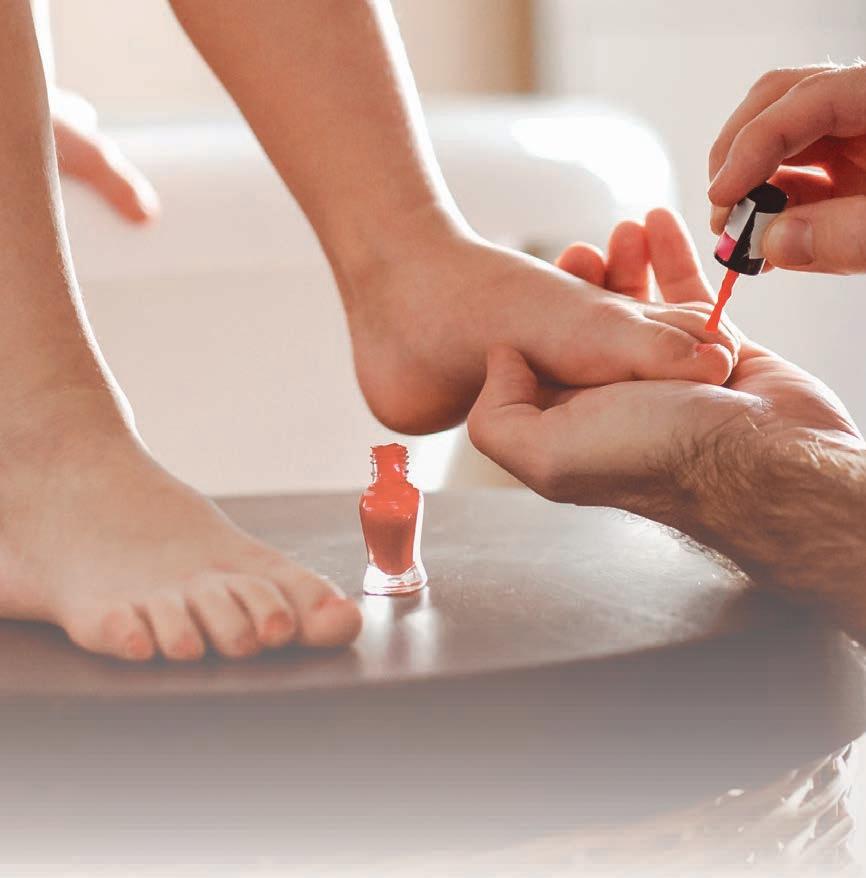
cooking and cleaning and one parent in the workforce financially supporting the family. This is not the norm today.
Many households with children now have two working parents, whether by choice or out of necessity. Because of this, many couples split duties and responsibilities and actively parent together. The role of fatherhood has never been more important! Dads have the ability and opportunity to help their children build self-confidence. Every child is different and has their own unique needs, but research has shown that a paternal relationship that is loving and accepting tends to produce children with higher self-esteem who get along better with their peers.
A nurturing and affectionate relationship between father and child tends to further the development of children’s achievement. Fathers who demonstrate love and provide firm guidance will often promote competence and confidence in children.
The stereotypical family unit or household has become increasingly more diverse. It can include single parent families, blended families and/or multigenerational households.
Today’s fathers are less able to rely on their own upbringing and relationship with their fathers due to societal changes that have them parenting in a new world!
Children of divorced parents do not have to be living in “broken” homes. Both parents can be actively involved in the child’s life. The most important thing is that the child feels loved and valued. The child is the common denominator and should be considered in all decision making.


Cheers to the dads who help with homework and attend class parties. Hats off to the dads who deliver and/or pick up children from school and attend dance practices. The modern day dad may be washing dishes, mopping floors and attending dance recitals…and it’s a glorious thing! The modern dad has the ability, more than ever, to make a real positive difference in their child’s mental, physical and emotional health.

12 An HHN publication Thrive | Hamilton Healthcare System
Cathy Kolodziej, M.Ed, LPC, CSC, LCDC, NCC Hamilton ISD
Cathy Kolodziej received her Masters degree in counseling from Tarleton State University in 2011. She is a Licensed Professional Counselor at Hamilton ISD. Cathy is passionate about helping others discover their inner strength in order to achieve a better quality of life.
Daddy Dos (and Mommy)
SPEND TIME WITH YOUR CHILD.
It sounds like a no brainer, but life happens. Your time does not have to equal your money. Play in the park or yard. Play a board game. Listen to your child as they play and want to include you. Don’t put it off or make excuses. Start from birth! Be present in their lives. By spending time with your child you are showing them that they are important to you and are worthy of your time. Your child needs to feel that you are invested in them.


BE A ROLE MODEL.
They are watching you. Teach them values, morals and work ethic by living it. Demonstrate honesty and responsibility. Show them how to treat others and how to set healthy boundaries. Give them the opportunity to do as you do and not just as you say.

COMMUNICATE WITH YOUR CHILD.
Have the uncomfortable conversations. If you start this early, then the conversations will feel less awkward and uncomfortable as they grow and mature. Let them know that there is nothing they cannot discuss with you while being mindful of their age and ability to comprehend. Don’t overshare about topics that burden or frighten them such as your personal sex life or family drama. Answer questions honestly and don’t get angry or defensive.
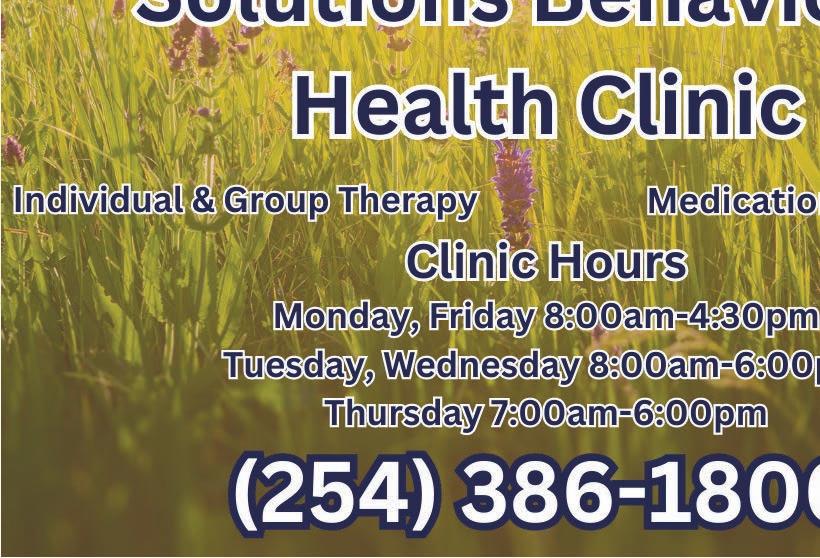
PRACTICE POSITIVE PARENTING


AND DISCIPLINE WITH LOVE.
Provide positive guidance and set reasonable limits. Remind them that actions have consequences. Recognize good behavior. Discipline in a calm manner and don’t react in anger. In all things show love. You are doing them no favors if you don’t correct undesired behaviors. Sometimes doling out discipline and punishment is as hard on the parent as it is the child, but it is important for children to know what desired behaviors are and to know that they are loved. Be the parent and not the friend who enables.
MODEL PROBLEM SOLVING AND COPING SKILLS.

Teach them to think for themselves and give them the tools that they need to be good humans! How you face adversity will directly impact how they face adversity. The integrity you demonstrate will teach them what kind of person they should strive to be. If you are mindful of the fact that a child is watching and learning from your every move it often has a positive effect on your own life. You may find yourself doing some self-evaluation as well!
BE INVOLVED IN YOUR CHILD’S LIFE.
Let your child know they are important to you. Read to them. Do homework with them. Value them and all things they are involved in. Children who grow up seeing their dads take an active role in their parenting tend to feel “safer” in a scary world. Spending time with your children is important. Sometimes that time may be spent doing fun things, but sometimes that time may be spent doing yardwork and other household chores.
13 Hamilton Healthcare System | Thrive An HHN publication parenting
he first EMS system to be designated as a Critical Access EMS provider, Hamilton EMS is licensed at the MICU level, the highest level in Texas.

In October 2022, HEMS expanded services into Lampasas County bringing the service area to five counties: Hamilton, Mills, San Saba, Llano and Lampasas.
The department currently employs more than 100 full-time licensed employees staffing 13 full-time MICUs, four Captain/ Paramedic Supervisors, four District Chiefs, one Professional Standards Captain and one EMS Chief of Department.
In addition to providing traditional high-quality EMS care, HEMS provides additional emergency and rescue functions. Through the Special Operations group, the system utilizes a variety of both outsourced and internally conducted training and credentialing to provide:
• Tactical or TAC Medic program- focuses on law enforcement support such as SWAT and response into ActiveAggression/Shooting incidents
• Technical or TECH
Medic program- this group focuses on the access, patient care and extrication/ rescue of patients injured or ill in very difficult and dangerous environments like confined space/cave or cavern/high and low angle rescues.
• Water Rescue- this group manages most, if not all, swiftwater, flash flooding, lake and river emergencies. Boat and jet ski accidents, swimmer rescues and evacuations are the main tasks of this group.


amilton County Hospital District
EMS personnel were recognized at the state capital this spring for the rescue of two children in Lampasas County.


HEMS, along with Kempner and Lampasas fire and police department, were recognized for their efforts in rescuing two children trapped in a cave collapse near Kempner March 18.
On that Sunday afternoon along the banks of the Lampasas River off of FM 2313 near Kempner, three brothers ages 9 to 15 were playing in a cave on their family property. At about 5 p.m, LCSO began receiving 9-1-1 calls stating a cave had collapsed and children were trapped.


Multiple law enforcement, fire and EMS units responded.
Hamilton EMS MEDIC 63 responded from their station at Kempner VFD staffed by EMTParamedic Alex Haynes and EMT Kyle Keahey.
HEMS MEDIC 62 staffed by EMT-Paramedic Robert Metheny and EMT Charles Vandergriff; and HEMS Supervisor Captain/EMT-Paramedic Heather Johnson in SQUAD 61 also responded from the main station in Lampasas.
MEDIC 63 arrived in the general area of the call, a rural part of Lampasas County, 12 minutes after the initial 9-1-1 call. They were flagged down and directed to the cave collapse where they were met by several community and family members already trying to help the boys.
Unfortunately, the cave was on the opposite side of the river with no road access, so both crew members made the brave decision to empty their pockets, drop their radio gear and swim.
When they reached the other side, they were advised the cave had actually collapsed twice. The first trapped the 9-year-old.
The 15-year-old escaped and had already dug his brother most of the way out when the second collapse occurred, trapping them both. Another brother was not impacted by either collapse and was the one who went for help.
14 An HHN publication Thrive | Hamilton Healthcare System
Texas District 68 Rep. David Spiller recognized Hamilton EMS and other first responders on the floor of the house for the rescue of two children in a cave collapse on the Lampasas River March 18. County
Lampasas
HEMS to the
the Rescue










The cave collapse was on the south side of a severe bend in the river. The river bank rises over 20 feet from the waterline where the cave entrance was to the top of the river bank. The river bed is wide at this point - more than 100 feet across when full of water - with a wide sandbar extending off the north side. The river was reportedly about six feet deep during the rescue and about 50 feet wide.

After swimming the river and reaching the cave entrance, MEDIC 63 began digging the boys out, assisted by more first responders. Once they were dug out enough to communicate, assessments were performed, and, finding serious injuries, a CareFlite helicopter was requested.


As the rescue progressed, MEDIC 63 called back across the river to MEDIC 62 for additional equipment.


However, radio and cell phone communications were not effective; and personnel who swam the river had dropped their equipment before entering the water. Captain Johnson



15 Hamilton Healthcare System | Thrive An HHN publication Microcurrent therapy with Acuscope Myopulse is an advanced solution for chronic pain and injury recovery. Sessions are noninvasive, painless and specific to your body and your condition. Enjoy high quality of life and get back to doing the things you love. Call for a free phone consult to see if this is an option for you. 803-389-7480 108 W 1st Street in Hico www.OmniTherapyByTyler.com Tyler Vandermeer BSN, RN Relieve pain. Repair injury. Retain activity. Rejuvenate skin. Revitalize life. emergency
positioned herself on the top of the south side river bank to maintain radio communications. In addition, the crew of MEDIC 62 shuttled equipment across the river via kayaks while preparing both Mobile Intensive Care Units to receive the critically injured young patients.
The helicopter landed on the sandbar and as the boys were freed, rapid patient assessments and initial trauma care were performed. Once packaged for transport across the river, the boys were lashed to the kayaks and taken to awaiting EMS and CareFlite crews.
The 15-year-old was paralyzed below the waist and flown to McLane’s Children’s Hospital in Temple. The seven-yearold, accompanied by his mother and a

Kempner VFD firefighter, was transported to McLane’s as well, suffering fractured ribs and hip and internal injuries.
Both patients appear to be recovering well. The initial spinal cord injury has reportedly improved following trauma surgery and discovering his spinal cord was not severed. Vertebrae has been realigned, and he is very slowly regaining neurological function of his lower extremities.
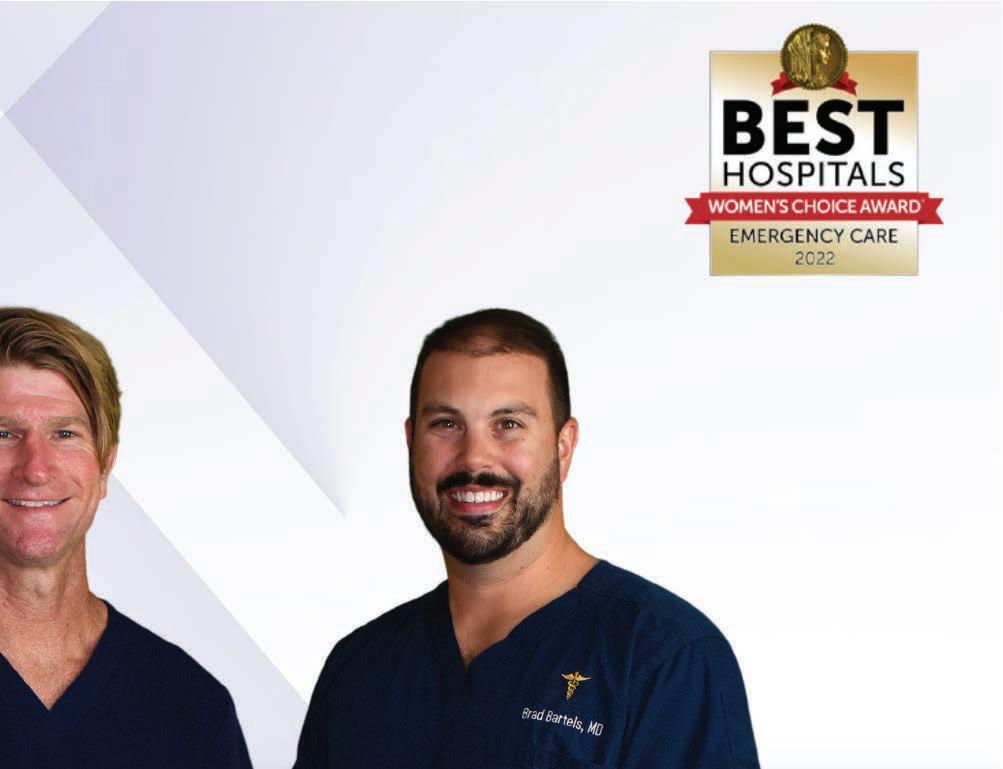
His overall prognosis is positive.
The younger brother is healing well following his injuries, and both have been released.
This incident was a traumatic experience for both the victims, their family and the public safety community in Lampasas
County.
Bravery and a hell-bent determination to do all that could possibly be done in saving these two kids cannot be understated. The participating agencies came together quickly, established an on-scene command structure, overcame communications issues and performed a rescue operation few are trained to do even with unlimited resources under the best of conditions, all while ensuring the victims received the best pre-hospital care possible without causing further harm.
HEMS began providing EMS services to Lampasas County Oct. 1, 2022, and is the first and only EMS system in Texas designated a Critical Access EMS Provider.


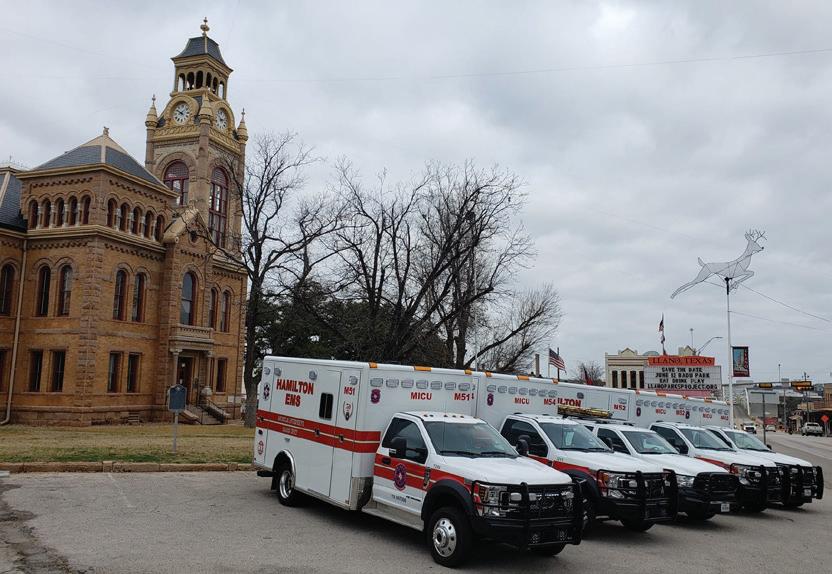


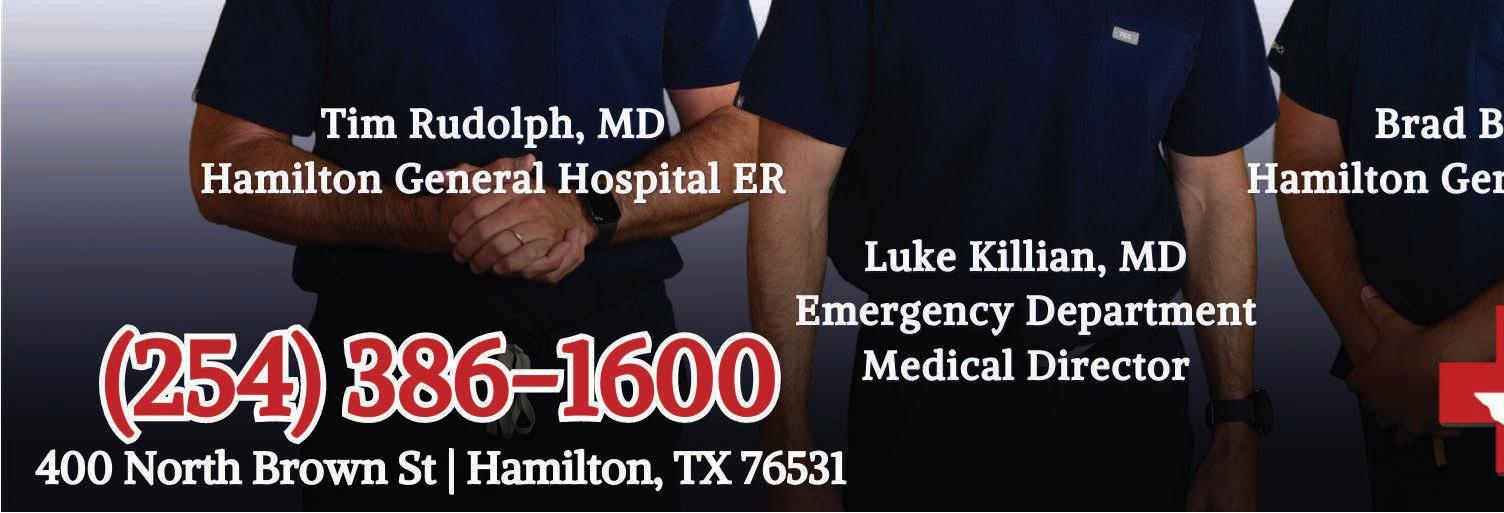

16 An HHN publication Thrive | Hamilton Healthcare System
Llano CountySan Saba County Hamilton County









We know how much you value your independence. You want to be surrounded by your belongings, your people and your community in your own home. We offer personalized support to help you stay at home on your terms. Our goal is to provide the care you need to age at home safely while maintaining your physical and mental wellbeing. Our caregivers are screened, bonded and thoroughly trained. Companion In-Home Senior Care offers services to help with daily needs including: • Companionship • Assistance dressing, bathing and grooming • Meal preparation • Medication reminders • Shopping • Cleaning and organizing Located in Hamilton and surrounding counties 254-784-0300 www.companioninhomeseniorcare.com You fought for it. We are dedicated to helping you maintain it. LIFE LIBERTY and the pursuit of HAPPINESS Veteran Personal Care Services Program Now Available
Make It Count!




ll around the world we hear in the news that birth rates are down. Many young people don’t want to have children. Our politics are fraught with battles and conflicts over family planning and “so-called” reproductive rights. Marriage rates are down. Many are too worried about the future—the economy, the environment—to want to think about raising a family.
But in direct contrast to a world and culture that devalues the family and the having of children, the gospels record for us that “One day, some parents brought their children to Jesus so He could bless them. But Jesus’ disciples scolded the parents for bothering Him. But when Jesus saw what was happening, He was angry with His disciples. He said, ‘Let the little children come to me. Don’t stop them! For the kingdom of God belongs to such as these… Then He took the little children in His arms and He blessed them” (Mark 10:13-16).



There is hardly space to record all the ways the Bible affirms children and the








vocation of raising children to fear and love the Lord.

In short, the Bible says they are worth it. They are worth the dirty diapers, shortened nights and tight budgets.
Dads, they are your mission in life! And time runs out so quickly.

I recently started teaching my oldest daughter how to drive. It seems like just last year she was learning to walk. Time flies.
So don’t wait. Lead your children in way of the Lord while you can. As the old saying goes: “It’s easier to train children than it is to repair adults.”
When you pray for your children each night, ask yourself, “If my children have a faith like mine, what kind of faith will they have?” That might be a scary thing to consider!
Do your children see a love for the Lord and His church in you? Do they see you preparing for worship each week as if it is a priority? Do they see in the example you set that serving the Lord is a worthwhile endeavor?
They are watching. No doubt about it. Make it count.
If there is ever anything I can help you or your family with, just reach out to me at St. John in Hamilton.
Pastor Aaron Kalbas has served as Pastor of St. John Lutheran Church in Hamilton since June 2021. He is an Aggie, husband and a father to five wonderful children. When he’s not preaching, teaching, having fun with the youth, comforting the sick, visiting the home-bound, planning for ministry, counseling others or leading a church of 500 people, he likes to be outside doing… well… just about anything else! Above all, Pastor Kalbas tries to be joyful in a world where joy seems hard to come by.

faith 10 An HH
publication Thrive | Hamilton Healthcare System
N
Pastor Aaron Kalbas St. John Lutheran Church, Hamilton
When you pray for your children each night, ask yourself, “If my children have a faith like mine, what kind of faith will they have?”





A Tye to athletes
 BY KYMBIRLEE JESCHKE
BY KYMBIRLEE JESCHKE
rom one athlete to another, Hamilton Healthcare System’s Physical Therapy team excels in working with athletes of all ages and returning them back to the field, court or track stronger.
Tye Moseley, DPT Director of Physical Therapy
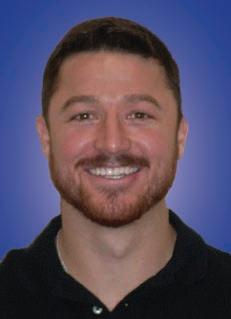
Physical Therapy Director Tye Moseley played football and baseball for the Goldthwaite Eagles and continues to enjoy sports and outdoor activities.
It is no surprise that Moseley has a passion for sports rehabilitation and enjoys helping young athletes.
“They bring in a different type of energy and ability to perform higher level activities,” said Moseley. “Growing up playing sports, it makes it fun to incorporate sports-related activities to help them return to their particular sport.
“Most injuries are due to a restriction or muscle imbalances and respond well to physical therapy.”

Common issues treated in young
athletes include ACL repair, multiple muscle strains in the hamstring or quad, tendinitis due to repetitive activities and shoulder dislocations.
Moseley and his team work closely with physicians, surgeons and members of the patient’s care team to formulate the best plan for healing.
HHS’s Physical Therapy team works hand-in-hand with orthopedic surgeon Dr. Keith Ellison, a familiar face on the sidelines of many area football games, but they can work with surgeons from anywhere.
“We work with all doctors and surgeons,” said Moseley. “Ask your doctor or surgeon to place a referral for PT to our Hamilton or Goldthwaite clinic."

Physical therapy is usually prescribed post-surgery or -injury and is an important part of the recovery process.
“Not only does physical therapy help an athlete return to sports, it also does so in a faster manner,” explained Moseley.

It takes two to three one-hour sessions per week for six to 12 weeks to rehabilitate an injury.




“During PT, we focus on weakness and


Stay Financially Fit!
muscular restrictions that are causing the injury. Once pain and restrictions have been addressed, then therapy will start focusing on a return to sport activities," he said.

However, young athletes don’t have to wait for injury or surgery to benefit from physical therapy.

“Physical therapy can also prevent an injury from occurring,” said Mosely. “Therapists can address an athlete’s minor issues before major injury occurs."
Signs that PT might be needed to avoid a serious injury include nagging issues, changes in movement like a limp, pain or even altered performance.
Talk to your doctor for a referral.
Education and prevention are a big part of the process.
“The goal is to treat the injury at hand and give them the education on how to prevent the injury from returning,” said Moseley. “Most of the time the athlete will return to their sports at a higher level of performance.
“The best part is getting to know my patients and helping them progress to reach their goals. We are a team, and I enjoy being a part of that team.”

20 An HHN publication Thrive | Hamilton Healthcare System Member FDIC www.mcbanktx.com It’s banking for the way you live. We have all the tools you need to keep your finances on track! Visit us in-person or online today and get started.
community

HeroesLogyn's
BY BRANDI ROUNTREE
ur daughter, Logyn has been saying she was going to play college basketball for as long as we can remember.

As soon as she was old enough ,she attended summer camps, played in different leagues for different teams and was eventually selected to play on a summer travel team out of San Saba called MOE Basketball, when she was in fourth grade.


She worked hard outside of normal practices to finally earn a starting position on MOE’s summer travel team the summer of her eighth grade year.


In the first tournament of the summer at 14 years old and a week before her eighth grade district track meet where she was predicted to win district in hurdles, she stepped to the side to stop a player from driving baseline and went to the floor screaming.


We soon found out she had torn the ACL on her left knee.
She had surgery in San Angelo and was referred to Hamilton Healthcare System Physical Therapy with Tye Moseley.


Tye worked very hard to coordinate therapy and meet expectations of the surgeon and physical therapy department in San Angelo.
We traveled about an hour from


Goldthwaite to Hamilton two to three times a week for physical therapy.

Tye was patient with Logyn but also pushed her beyond what she ever thought she was capable of doing.
There were many tears and many times she wanted to quit, but Tye stayed beside her and supported her through the journey. He spoke words of encouragement but also hard words of correction when she needed them the most.
She was released from physical therapy after nine long months and was able to return to play with her school team in Goldthwaite.




Logyn finished her freshman year of basketball and had a great sophomore basketball season before entering track season.

While running hurdles in her first track meet of the season she went down on the second-to-last hurdle.
We soon found out she had torn her right ACL. This time she was 16 years old.
The first thing Logyn told us was, “I’ve done this before and I can do it again.”
This was a completely different mindset than she had the first time.
She again had surgery in San Angelo and started physical therapy soon after.
At that time, Hamilton Healthcare had




21 Hamilton Healthcare System | Thrive An HHN publication
When I tore my ACL and lateral meniscus in 2021, I thought my athletic career was over. My doctors said I would have to undergo intense physical therapy and would likely never have the same athletic ability again. Tye Moseley was highly recommended and we decided to do therapy through him despite the hour-long drive. This ultimately was one of the best decisions of my life. For three days a week, Tye put me through intense physical rehab and vigorous strength training. He never allowed me to slack off or take my workouts lightly, as he knew what I was truly capable of. His enthusiasm and optimistic personality made one of the darkest times in my life seem like a mere setback. After seven months of rehab I not only passed my eligibility test on the first try, but was stronger and faster than prior to my injury. Against all odds, I just committed to play football for Howard Payne this upcoming semester, and I owe all of that credit to Tye. He is one of the few people who believed in me, and he has become a lot more than a physical therapist, but rather a friend.
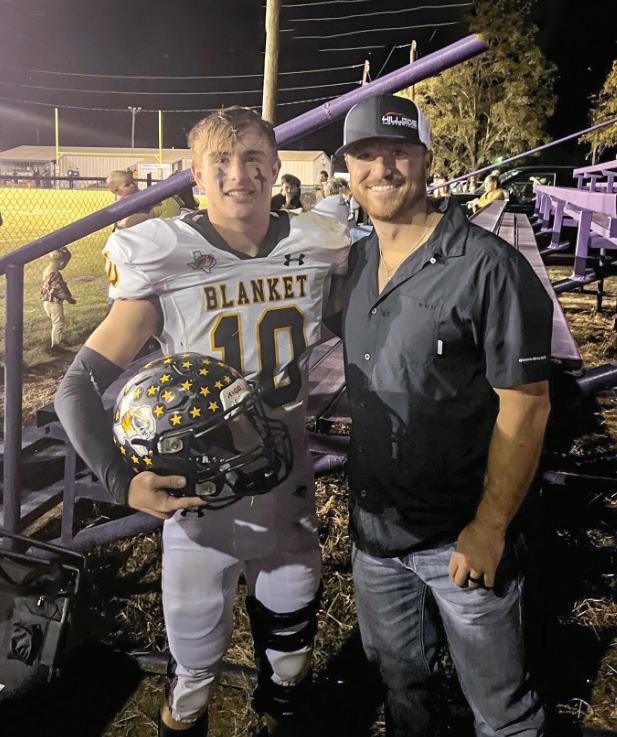
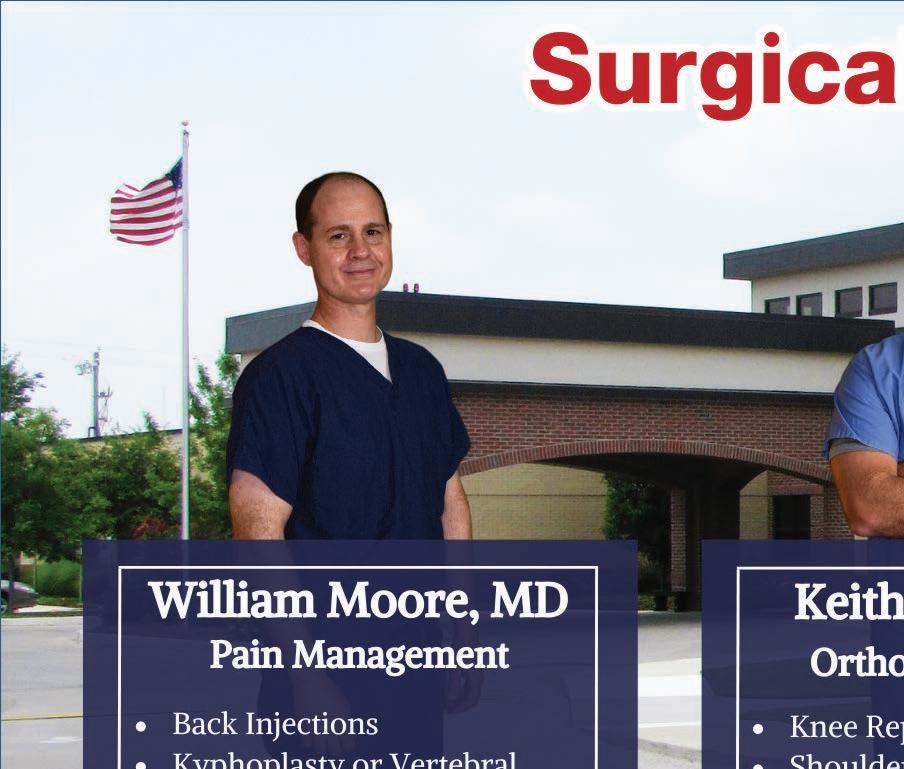 Brayden Day
Brayden Day
opened a physical therapy clinic in Goldthwaite, which reduced travel greatly and made coordinating therapy much easier.


Logyn started physical therapy with Garrett Schwartz.

Like Tye, Garrett was great to work with San Angelo and Logyn’s surgeon to coordinate her care, physical therapy and progress.

Logyn was older and stronger this time, and Garrett recognized she needed to be pushed. She worked hard but Garrett knew she could push herself further than she was giving herself credit for.
In the beginning, Logyn would leave physical therapy angry with Garrett, saying she didn’t want to go back.
Soon she realized it was all going to be worth it. Logyn started seeing results through muscle mass, flexibility and strength.
Garrett worked consistently with Logyn for about nine months ,,and Logyn left physical therapy stronger than she had ever been before.


She returned to play basketball her junior year and then had a great senior season.
She was named District Defensive Player of the Year, selected to the Fellowship of Christian Athletes All-Star team and selected Texas Girls Coaches Association All-State.
Logyn has now decided to continue her basketball career and committed to playing for Howard Payne University.

I can honestly say there is no way she would be where she is today without Tye and Garrett pushing her to move past the hurt and pain and become stronger and stronger every season.
Garrett even created a workout plan for her to follow after she was released, and she still uses that work
22 An HHN publication Thrive | Hamilton Healthcare System
~














254-978-8338 www.hydrahealthivtherapy.com Located in downtown Hamilton. Mobile service available. info@hydrahealthivtherapy.com Facebook.com/hydrahealthivtherapy Wide range of health benefits. Instant delivery, instant absorption. Helps prevent illness and enhance immunity. Improves recovery time and health optimization. Shown beneficial in treating: dehydration • fatigue • weight loss • recovery • anti-aging athletic performance • hair/nail health • skin health infection • anxiety/depression • autoimmune disease drug/alcohol addiction of IV and injectable therapy. Discover the benefits Perform your best. Now offering Semaglutide!
NO COUNTRY OLD MEN FOR



 BY GRANT LENGEFELD
BY GRANT LENGEFELD


he late, great American actress Bette Davis perhaps said it best, “Old age is no place for sissies.” Unfortunately, men in the United States appear to have taken Davis’ aphorism to heart.
A silent crisis in men’s health is shortening the life spans of fathers, husbands, brothers and sons, and a closer look at longevity data tells a complicated story. Across the life span – from infancy to the teen years, midlife and old age – the risk of death at every age is higher for boys and men than for girls and women.


The frightening result is a growing life expectancy gap between men and women. According to the National Center for Health Statistics, life expectancy for
women was 79.1 years in 2021 compared to 73.2 years for men. That 5.9 year disparity is the largest gap recorded in over a quarter-century.
Behavioral risk is a factor. Drug and alcohol use, smoking and reckless driving are all more prevalent among men. The U.S. Department of Transportation reported in 2020, that 72 percent of all motor vehicle crash death victims were male. Men also accounted for 71 percent of pedestrian deaths, 87 percent of bicyclist deaths and 92 percent of all motorcycle fatalities.
The aforementioned NCHS report found that chronic liver disease and cirrhosis accounted for another 3.4 percent of mortality for men in 2021, and based on 2020 data from the Centers for Disease Control and Prevention, men die by suicide nearly four times more often than women.
The latter may have more to do with a cultural bias around masculinity that teaches boys and men to hide their feelings and not complain. Cultural expectations to remain stoic can also delay men’s care, leading to treatable situations turning deadly. Men’s care is often focused on urologic and prostate health rather than cardiac care, mental health or other issues that afflict men at high rates. Although diseases such as diabetes, heart disease and hypertension are common in men and women, men often wait longer to seek care, and the illnesses are diagnosed at later stages, leading to more

damage and poorer outcomes. This too partly accounts for why the cancer mortality rate is higher among men –189.5 per 100,000 compared to 135.7 per 100,000 for women.
Serving in both the Hamilton and Hico clinics, Hamilton Healthcare Family Practitioner Dr. Charles Johnson agrees, “Many men are lost, medically speaking, in between their pediatric years and when they have their first health scare in their 50s.”
Although boys and girls visit the pediatrician at the same rate, says Johnson, the trend tends to change in adulthood, and medical visits by men decline. CDC data supports those claims, showing that the physician visit rate among females is almost 40 percentage points higher.
“One reason is that women regularly visit the gynecologist in their reproductive years, and there is no similar pathway for men,” says Johnson. “But even when visits for pregnancy are excluded, research suggests that women are still twice as likely as men to schedule regular annual exams and use preventive services.”
Doctors say that men are most likely to visit the doctor because of a sports injury or for the “blue pill” visit for erectile dysfunction.
Johnson adds, “Going to a doctor to prevent cancer or heart disease normally never crosses their mind until something has happened.”
Johnson says early detection of a medical issue is the best way to improve the effectiveness of both treatment and management.
Just as the title of Cormac McCarthy’s novel, No Country for Old Men, eerily approaches an American theme, Johnson invokes the memory of a John Wayne gist, “Whoa, take ‘er easy there, Pilgrim.”



















Pulling back the reins, Johnson knocks down the dust, providing 10 checkpoints to guide men along that hopefully long and happy trail.

24 An HHN publication Thrive | Hamilton Healthcare System
1. Blood Sugar Check
More men die of diabetes than women. The death rates for men are 31.2 per 100,000 vs. 19.5 per 100,000 for women.

If you are older than 45 or have a body mass index above 25, no matter your age, the American Diabetes Association recommends you be screened for diabetes. Diabetes, a chronic disease characterized by high blood sugar, greatly increases your risk of heart disease and other complications such as kidney damage and erectile dysfunction due to nerve damage.
Annual glucose testing serves as the best method of diagnosing diabetes before it gets too advanced. Type 2 diabetes and prediabetes symptoms can happen slowly and may not be noticeable, so staying aware of your blood sugar levels and risk of developing diabetes is important.
Johnson says, “Yearly checks for glucose levels are imperative for men to decrease their likelihood of significant cardiac disease.
“Many men with the beginnings of





diabetes and/or a diagnosis of diabetes can be managed appropriately with diet and exercise.”
Johnson adds, “If lifestyle management with diet and exercise is not sufficient, there are oral medicines and/or insulin that can be used.”
2. Skin Check
Men with a family history of skin cancer, or who had significant sunburns when they were younger, are at high risk for skin cancer. Johnson says skin cancer can affect men of any age.






“It is very important to get a yearly skin check by a dermatologist. At home, men should keep a close eye on their moles and birthmarks, as slight changes can signify concerning etiology,” Johnson said. “Consistent use of sunscreen is paramount.”
3. PSA Test
One in seven men will develop prostate cancer. Other than skin cancer, it is the most common form of cancer in American





men. The prostate-specific antigen, or PSA blood level test, along with digital rectal exams (DREs), are the best way to detect prostate cancer. All men 50 to 70 should be checked on a yearly basis.
Johnson adds, “If a man has a family history of prostate cancer or an unknown history, PSA testing should begin at 40.”


4. Colonoscopy
Colon cancer screening should begin at age 45, or 10 years prior to the diagnosis of colon cancer in an immediate relative. For example, get screened at age 36 if your mother was diagnosed at age 46. A colonoscopy is a traditional, effective procedure to identify colon cancer or precancerous polyps.
Johnson says future colonoscopies are done every three to 10 years, based on the results of each colonoscopy, and he points out that less invasive options are now available for colon cancer screenings. Talk to your health care professional about which option is best for you.
You can even have it done here at home.
25 Hamilton Healthcare System | Thrive An HHN publication 254-386-3111 ♦ 107 North Rice Street, Hamilton ♦ jordanpharmacy@ embarqmail.com ♦ jordanpharmacy.com Hop in the saddle with Your Hometown pharmacy. WE WORK Best WITH OUR CUSTOMERS. B At locally-owned Jordan Pharmacy, we are here when you need us, just like your favorite horse. You can depend on us for quality, accuracy and convenience. spotlight 10
Checkpoints to Keep You in the Saddle
5. Blood Pressure and Cholesterol Check

High blood pressure is the number one cause of stroke in men, and it is very serious if left unmanaged. Blood pressure should be checked at least every two years, but Johnson advises men to check their blood pressure more regularly. If unable to check your blood pressure at home, Johnson says you can get a blood pressure reading at most pharmacies without having a doctor’s appointment.
High cholesterol can also lead to serious cardiovascular problems, like heart attack or stroke. Men 20 and older should have their cholesterol checked every three to five years, and then yearly after the age of 50.
Starting at age 18, men at average risk for heart disease should have a cholesterol screening every five years. If you have a family history of high cholesterol or heart attacks, smoke, eat a poor diet, are overweight, have diabetes, are physically inactive or older than 45, you may need more frequent testing.

6. Echocardiogram
Many deadly cardiac risk factors are caught with simple cholesterol testing and blood pressure monitoring, as well as weight management. But if there is a family history of cardiac disease, or if you already have known elevated cholesterol or high blood pressure, echocardiograms or cardiac stress tests can ensure that there is not significant heart damage.
Depending on individual circumstances,

Bottom line… Men older than 50 should have a yearly physical exam, and men younger than 50 should have a physical exam every three to five years. Even if you are feeling healthy, a regular checkup with your healthcare team is a good way to validate your health or identify a problem in its early stages. And remember, health is not only physical. Talk to your healthcare team about your mental and emotional health.
Whether it be because men would rather “rub some dirt on it” and move on, or the less admitted reason of fearing an unwanted truth that something simply is not


your doctor may want to do an echocardiogram to check for heart disease as early as the 20s, says Johnson.
7. Liver Enzyme Test
Liver enzyme testing is part of standard blood work and looks for any damage to the liver that can come from various sources, including alcohol.
“It is important for men to have these enzymes checked, as they can run high due to over-the-counter medicines, alcohol consumption, inflammatory disorders, thyroid disorders, obesity and some toxicities,” Johnson says.
8. TSH Test

Your thyroid helps every cell in your body by releasing hormones that regulate metabolism. Any changes in the hormones it produces can impact a man’s life and cause weight gain, lethargy, exhaustion or fatigue. A blood test called a thyroidstimulating hormone (TSH) test can be done by your doctor to check your thyroid’s function.
“Many of the symptoms of an underactive or overactive thyroid unfortunately are symptoms that many men feel are ‘part of life,’” Johnson says.
“If testing shows abnormalities, they can usually be fixed through medication.”
9. Lung Screenings
Lung cancer is the most preventable of all cancers. Ninety percent of the time, it is found in people who smoke. The rest are


right, men have a tendency not to prioritize their health and well-being.
“We tend to neglect men’s health, but it needs unique attention, and it has implications for the rest of the family. It means other members of the family, including women and children, also suffer,” says Johnson.
So men, perhaps another John Wayne adage will grant you the encouragement you need.
typically people with genetic predisposition to developing it or people who have been exposed to secondhand smoke or caustic chemicals.

Prevention is key, says Johnson. “Lung cancer is often an incidental finding on scans that are done for an alternate reason.”
The U.S. Preventative Services Task Force recommends annual screening for lung cancer with a low-dose CT. Lung screening is for adults ages 50 to 80 who have a 20-pack-per-year smoking history, currently smoke, or have quit within the past 15 years.
Screening can be stopped when a person has not smoked for 15 years or develops a health problem that substantially limits life expectancy.
10. Abdominal aortic aneurysm check

For men between 65 and 75 who have smoked more than 100 cigarettes in their lifetime, the U.S. Preventive Services Task Force recommends a one-time abdominal aortic aneurysm screening ultrasound. According to Mayo Clinic, an abdominal aortic aneurysm is an enlarged area in the lower part of the aorta, the major blood vessel that supplies blood to the body.
Because the aorta is the body’s main supplier of blood, a ruptured abdominal aortic aneurysm can cause life-threatening bleeding. Men older than 60 with family history of abdominal aortic aneurysm should consider regular screening.
“Courage is being scared to death but saddling up anyway.”

Make an appointment today to see your Hamilton Healthcare System provider and prolong that handsome ride into the sunset. Happy trails!






26 An HHN publication Thrive | Hamilton Healthcare System
When you’re treated at Texas Oncology, you’re getting leading edge cancer care right here in Waco. Our skilled physicians fight cancer with breakthrough clinical trials and the latest treatment innovations — so Texans everywhere can receive recognized cancer care in their own community.















 Carl G. Chakmakjian, D.O., FACP • Tyler W. Snedden, M.D.
• Thomas J. Harris, M.D. • Rachel Ramsey, NP, AOCNP Carlos A. Encarnación, M.D., FACP • Ofobuike N. Okani, M.D., FACP • Katie Bone, MSN, APRN, FNP-BC Dawn Turner, RN, FNP-C, AOCNP • Justin W. Wray, M.D., Ph.D.
Carl G. Chakmakjian, D.O., FACP • Tyler W. Snedden, M.D.
• Thomas J. Harris, M.D. • Rachel Ramsey, NP, AOCNP Carlos A. Encarnación, M.D., FACP • Ofobuike N. Okani, M.D., FACP • Katie Bone, MSN, APRN, FNP-BC Dawn Turner, RN, FNP-C, AOCNP • Justin W. Wray, M.D., Ph.D.
Additional locations in Clifton, Gatesville, Groesbeck, Hamilton, Hillsboro and Mexia. Texas Oncology–Waco 1700 W. State Hwy. 6 Waco, TX 76712 • 254-399-0741 Texas Oncology–Horizon Circle 6520 Horizon Circle Waco, TX 76712 • 254-755-4460 TexasOncology.com
Sweet
s the central Texas summer sun starts to set and you’re finishing up a long, hard day’s work out on the ranch, there’s nothing better than sitting down in a cool easy chair and drinking an ice-cold glass of tea. For many men, even this one quick drink can result in multiple urgent trips to the bathroom later–and maybe even a poor night’s sleep!


What is BPH?






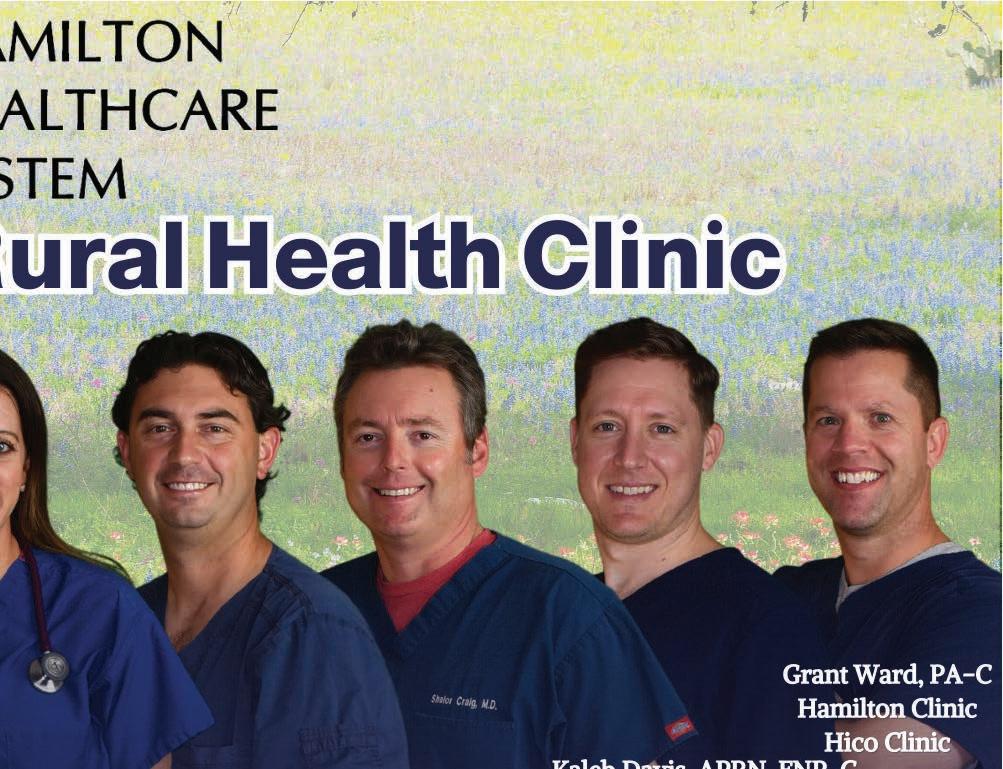



Benign Prostatic Hyperplasia, or “BPH,” is a very common issue that men all over the world struggle with. The prostate is a small donut-shaped gland that sits next to the bladder and surrounds the urethra in men. It secretes the fluid that helps keep sperm healthy and happy. It is very common for the prostate to grow throughout the course of our lifetimes, and as the prostate grows, it tends to squeeze the urethra. This makes it harder for the bladder to push the urine out; think about what the flow looks like when you step on a water hose!

28 An HHN publication Thrive | Hamilton Healthcare System
Tyler Stewart, M.D.
Urologist Hamilton Family Practice Clinic
Tea ...and urgency!
Symptoms
BPH is very common; roughly 60% of 60- year-old men have BPH, and this number continues to get even higher as you age. BPH can result in a wide variety of symptoms, including:
Obstructive: straining to urinate, trouble emptying the bladder, weak flow, difficulty starting the stream, dribbling after finishing
Irritative: frequency, urgency (running to the restroom), incontinence, waking up at night


It’s important to get your BPH under control when you start having symptoms; if your bladder is straining and struggling for many years, eventually it can wear out, and you could eventually require a catheter! Thankfully, there are multiple good treatment options.
Medications
There are several different types of medications (pills), and they all have different effects on the prostate. The most common option is Flomax (generic: tamsulosin), and this helps relax the prostate. The other options are also easy to take and very tolerable, usually with few side effects or medication interactions.
Procedures
For patients who don’t want to take medications, moving on to surgeries or procedures can offer excellent longterm improvement. Treatment options are dependent on prostate size, but in general, most men are candidates for the following options (which are all minimally invasive, outpatient procedures):
• Urolift
This is a roughly 15-minute procedure where small implants pull the prostate apart; this is better for small glands and young men, but most patients end up needing further treatment later.
• Rezum
This is a roughly 10-minute procedure where steam is used to dissolve away prostate tissue; this is the best at preserving sexual function and is fairly durable.

• TURP
This is the gold standard; we physically resect the part of the prostate that blocks the bladder (through the urethra–no cuts on the skin!). This will last 10-15 years.
• HOLEP
This uses a laser to resect the prostate; it has the lowest risk of bleeding but a slightly higher risk of incontinence afterward.
There’s no reason to suffer with bothersome urinary symptoms, so schedule an appointment to come visit me in Hamilton so you can enjoy that glass of sweet tea!

Dr. Tyler A. Stewart is a Urologist with Ascension Medical Group Providence Urology in Waco. He graduated at the top of his class at the UT Health Science Center in San Antonio. Dr. Stewart has received multiple awards such as the Endoscopic Excellence Award, the Preston Littrell "Best Resident" Award and multiple UTHSCSA Urology Department awards among others. He treats men and women of all ages and sees patients at the Family Practice Rural Health Clinic in Hamilton.
FROM THE LAB
What is the PSA test and what does it measure?
The Prostate-Specific Antigen (PSA) test is a blood test used primarily to screen for prostate cancer but can also be used to screen for benign prostatic hyperplasia (BPH), prostate infection, and/or inflammation of the prostate.

How is it performed?
Jared Marcus Director of Laboratory Services


The test is performed using the blood collected at the laboratory, centrifuged down to separate the red and white blood cells, from the serum. The serum is then loaded onto an analyzer that runs a paramagnetic chemiluminescent immunoassay particle technology to quantify a value for the medical laboratory scientist to then release the value to the primary care provider for interpretation.
What are the result ranges and what do they mean?


The normal PSA value is usually stated to be less than 4.0. However, because benign enlargement of the prostate gland tends to occur as men get older, an age-adjusted scale has been developed:
NORMAL AGE
0-2.5 40-50 yrs.
2.5-3.5 50-60 yrs.
3.5-4.5 60-70 yrs.
4.5-5.5 70-80 yrs.
How accurate is the test?
With the pre-analytic and post-analytic variables excluded, the test has a very small margin for error (0.01%); so small in fact that medical providers will order a PSA lab test before they order any other test. Other tests include digital rectal exam (DRE), prostatic massage, transrectal ultrasound (TRUS) and/ or a prostatic biopsy.
Is the test covered by Medicare or insurance?
The test is generally covered for medical necessity as a screening. Please check with your medical provider, doctor’s office or insurance agency for definitive coverage information.

29 Hamilton Healthcare System | Thrive An HHN publication specialists
Men’s Skin The Truth About

he components of skin health are the same for everyone at every age: Protect. Provide. Maintain.




At the simplest level, we protect our skin with a good cleanser and sunscreen. We provide our skin with hydration and moisturizers. We maintain skin health with regular skin exams to maximize early detection of skin cancers or chronic skin conditions.
To explore skin concerns from men’s perspective, let’s first consider the distinctions of men’s skin.


Things start to get exciting with puberty and the increase of testosterone. For a young man, this very normal process can cause significant acne on the face and torso. Fortunately acne can be treated and the risk of scarring minimized. Critical treatment

options will give young patients the ability to control their acne and potentially build confidence in their appearance at a time of significant transition.
In fact, men might continue to struggle with acne into adulthood as men’s skin will continue to produce more sebum (oil.)
Another biological difference is that men’s skin generally contains higher densities of collagen resulting in thicker skin. Testosterone will also be the switch for hair growth, increasing the size of hair and hair follicles. Adolescents might experience rapid growth in their beard or a gradual increase in facial hair. Alternatively, some follicles do not have the receptors to respond to testosterone. This is why we all have different hair growth and hair types.

Shaving those beards can cause psuedofolliculitis barbae, the clinical name for bumps that appear around hair follicles after shaving. Skin can develop lesions that are red and inflamed and may even scar.





Men with curly hair are more at risk because the hair will curve and




become ingrown. Look for razors such as single blades that will not cut hair too short. Products to exfoliate the skin and others to moisturize the skin after shaving are beneficial. Shaving along the direction of hair growth is the best technique.
Skin is the largest organ and needs protection. On a tactical level, men should consider sunscreen as their skin’s body armor. Any time one is outside, exposure to harmful UV rays is likely. Whether driving a tractor or driving a daily commute, protect arms and hands from windshield sun damage.

Common surgical sites for skin cancer include nose, ear, face, head and arms. Cover up with sunscreen and a good hat. Ball caps are cool, but broad-brimmed hats are better!

Explore your individual needs with your dermatologist, who is the expert on skin, hair and nails. Annual exams are important to monitor skin changes and identify chronic conditions.
Healthy skin is happy skin!
30 An HHN publication Thrive | Hamilton Healthcare System skin
health
Dr. Rusty Rowe is Board Certified in Dermatology and Micrographic Dermatologic Surgery. He retired from Army Medicine after 22 years of service. Dr. Rowe is the founder of RealSkin Dermatology with 10 clinic locations in Central Texas, including Family Practice Rural Health Clinic in Hamilton, “serving you, closer to home.”
Rusty Rowe, M.D. RealSkin Dermatology Hamilton Clinic



























































































































WE’RE ALL FIGHTING CANCER A FREE Test Could Save Your Life. Call 888.223.8620 TO QUALIFY FOR A FREE AT-HOME COLORECTAL CANCER SCREENING TEST YOU MUST: Be between the ages of 45 and 74 Have no personal history of colorectal cancer or colon surgery Have not completed a stool-based test in the last year or colonoscopy in the last 10 years MONCRIEF.COM Colorectal cancer screenings for those who qualify provided by Cancer Prevention and Research Institute of Texas (CPRIT). Other cancer screening and survivor services available. Call 888.233.8620 for details.
healthy mind Mental health

okay to ask for help

ven the toughest people need help sometimes. Due to variables like social and geographical isolation, weather and fluctuating commodity prices, those in agriculture face unique mental health challenges and an increased risk for suicide.
Signs and symptoms of a mental health crisis may include a decline in personal appearance, changes in routines or social activities, increases in illness or chronic conditions, lack of interest in activities, a decline in the care of pets and livestock, a decline in the appearance of the farm, increases in farm accidents and a recent loss
The AgriStress Helpline is a free and confidential crisis and support line that can be called or texted 24/7. The helpline is answered by crisis specialists with training on factors that impact people who work in agriculture.
When someone calls the AgriStress Helpline, no matter who they are, they will get service. No problem is too big or too small.

hen it comes to mental health, men face unique challenges.
anger and aggression or physical symptoms, such as headaches or stomach problems.

 Elizabeth Bays, MS, LPC, NCC, CFRC Solutions Behavioral Health
Elizabeth Bays, MS, LPC, NCC, CFRC Solutions Behavioral Health


While there has been a significant push to address mental health issues in recent years, much of the focus has been on women. However, studies show that men are equally as likely to experience mental health problems as women, but are far less likely to seek help. This suggests that we need to do more to address men’s mental health and break the stigma surrounding it.
One of the reasons men are often reluctant to seek help is the erroneous perception attached to mental illness. Unfortunately, many men still feel they are expected to be tough and resilient. Men’s issues often stem from societal expectations and gender roles, which may lead men to think that they must be the breadwinners, display “masculine” traits, such as strength and control, not seek help from others, or not speak openly about their emotions. This creates a sense of shame and embarrassment around mental health, leading men to suffer in silence and not share their struggles with others. This can lead to feelings of loneliness and isolation, making the problem worse.

Another issue is that men’s mental health problems often present differently from those of women. Men are more likely to experience substance abuse, addictive behaviors or anger issues as a way to cope with their feelings. They are less likely to experience anxiety or mood disorders, but when they do, they may present with different symptoms that are not always recognized as mental health issues. For example, depression in men may manifest as increased
Suicide rates among men are also alarming. In the United States, men die by suicide four times more often than women, making up nearly 80% of all deaths by suicide. In fact, suicide is the leading cause of death for men younger than 50. This highlights the urgent need for men to seek help as soon as they can.

So, what can be done to address men’s mental health? Firstly, it’s crucial to break the stigma and encourage men to speak up about their struggles without fear of judgment. Men need to be encouraged to seek help from mental health professionals, who can provide them with the necessary support and tools to manage their mental health. Mental health services should also be made more accessible and user-friendly to make it less daunting for men to reach out for help.
Additionally, public awareness campaigns can be created to educate men on the signs and symptoms of mental health problems and how they can get the help they need. This could involve engaging with men in their communities, workplaces, and social networks and encouraging them to have open conversations with loved ones to break down the stigma around mental illness. Medical providers can also help educate men about signs and symptoms of mental health problems and reduce the negative perception about gettng help.
Men’s mental health is an important issue that needs to be addressed with urgency. We need to recognize that men are just as vulnerable to mental health issues and create safe spaces where they can seek help without shame or judgment. Through increased awareness, education and support, we can help more men manage their mental health and lead happier healthier lives.
Elizabeth Bays completed her Master’s degree in Counseling Psychology at Tarleton State University. She has been a member of the Solutions Behavioral Health team since 2015 and serves as clinical director while seeing a wide range of client populations. She is particularly concerned with the impact of trauma and improving intervention to support trauma recovery for better emotional, physical and relationship health.
32 An HHN publication Thrive | Hamilton Healthcare System
It’s


Pay off debt with a Plan in Mind

f you’ve accumulated more credit card debt than you can pay off in a few months, how can you quickly eliminate that debt while minimizing your interest payments?



The particular strategy you should follow will depend on many factors, including the total amount of debt, the nature of the debt, your credit score, your income and your financial plans.

Because there are so many factors to consider, it’s best to talk to your advisor about the specifics of your situation. Here is some general guidance.


If you’ve accrued a few thousand dollars in credit card debt, but you will be able to pay it off in 12 to 21 months, consider applying for a credit card with an introductory 0% APR period as well as a 0% balance transfer fee. The length of the 0% APR period can range from 15 to 21 months. If approved for the card, you could transfer your debt to it and pay it off during the 0% APR period, thereby avoiding interest charges. The money you save can grow significantly, given the power of compounding. However, before applying for the card, consider whether you plan on purchasing a home in the near future or applying for another type of loan. Applying for a new credit card might lower your credit score enough to negatively impact your loan application or the loan interest rate.












If your debt is so substantial that you won’t be able

34 An HHN publication Thrive | Hamilton Healthcare System
Melanie J. Housden, AAMS Melanie J. Financial
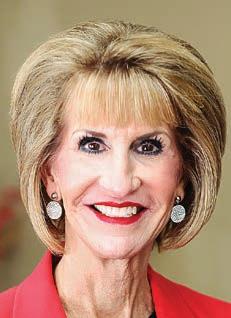
to pay it off during the introductory period on a new credit card, you may want to seek a personal loan with a fixed interest rate. This interest rate is likely to be lower than the variable interest rate on your credit cards, and you can use the loan to pay off all the credit cards.
To choose the most favorable loan terms, you would want to use a debt consolidation calculator to compare different loan term options and the amount of savings each provides. Your advisor can also help you with the back-of-the-envelope calculations and parse your options, e.g., a securities-based line of credit.
Before seeking a loan, speak to your financial advisor about the specifics of your situation. They have likely helped others in the past who are battling debt issues and can help you find an objective way forward.
If part of the debt is for medical bills, for example, your advisor may counsel you to first pursue having the medical debt forgiven. Your advisor may also recommend a nonprofit debt relief program, with counselors who will help you devise a debt reduction strategy for a small monthly service fee.
Over the course of her professional career as a financial advisor, Melanie J. Housden, AAMS®, has been on a continual journey to provide better opportunities with lower cost to clients. Today, her ongoing due diligence has led to the creation of Melanie J Financial, LLC, an independently owned and operated financial planning and investment advisory practice located in Hamilton and her affiliation with Raymond James Financial Services. Melanie is both founder of Melanie J Financial and a Wealth Management Advisor with RJFS. Melanie and the team at Melanie J. Financial bring more than two decades of financial planning experience to Central Texas. Her office includes multiple licensed wealth planners to give you the best option for your financial future. Outside of work, Melanie loves spending time with her family, traveling and shopping. An advocate for her community, Melanie has volunteered and served on numerous organizational boards. She is currently a director for the Hamilton Economic Development Corporation and a board member for the St. John Lutheran Academy.
Withdrawals from tax-deferred accounts may be subject to income taxes, and prior to age 59 1/2 a 10% federal penalty tax may apply. Roth IRA owners must be 59 1/2 or older and have held the IRA for five years before tax-free withdrawals are permitted. The process of rebalancing may result in tax consequences. Asset allocation does not guarantee a profit nor protect against loss. Investment products are not deposits, not FDIC/NCUA insured, not insured by any government agency, not bank guaranteed, subject to risk and may lose value. © 2023 Raymond James & Associates, Inc., member New York Stock Exchange/SIPC. © 2023 Raymond James Financial Services, Inc., member FINRA/SIPC. Raymond James Financial.
Medical Debt Solutions


on't let medical debt get you down. Hamilton Healthcare System offers solutions to get you the care you need without being weighed down by debt.



Payment Plans
Set up a payment plan that works for you by calling 254-386-1902.
Assistance Programs
There are state and hospital programs available for medical coverage or discounts. Reach out to see if you qualify.

Discounts
Ask about self pay discounts.
Online Bill Pay




Paying your bill is safe, convenient and easy with online bill pay at hamiltonhospital.org.

35 Hamilton Healthcare System | Thrive An HHN publication 1315 E Hwy 22 • Hamilton, TX 76531 • 254-386-3171 • www.fpacp.com Short Term Rehabilitation • 24-hr Skilled Nursing Care • Assisted Living Focused Care residents enjoy: activities such as painting games and bingo bible study scenic country drives live music weekly outings in-house beauty shop spacious rooms community involvement sponsoring activities like Dove Festival and Christmas on the Square Life Living bloom in Full
finance
Side planks
Start on knees and elbow for 20 to 30 seconds, When you get comfortable, progress to elevating the top arm then rotate through the gap of your body and twist the torso out and all the way back up. Keep hips as high as possible, squeeze the glutes and keep the pelvis steady. Aim for 10 to 15 reps on each side. Progress as tolerated for two to five sets. This move stabilizes around the shoulders and strengthens the core.
Improve your
Swing
he key to improving your golf swing and preventing injury is strengthening the core, stabilizing the shoulders and improving hip mobility. These exercises are beneficial in creating better rotation, a stronger lower back, developing power in your golf swing and overall protection against potential injuries. If you have experienced injury or have pain during your golf game or workout, consult with your doctor about how physical therapy can give you the individual help you need to address your specific issues and get you back on the course.
Standing woodchop
Improve core strength and rotational ability. Use a medicine ball or cable machine. Begin with the cable or ball down at opposite knee in a squat position then come up and raise hand above the head to the opposite side diagonally and then come back down. Aim for 10 to 12 reps on each side for two to three sets.


























































































































































































































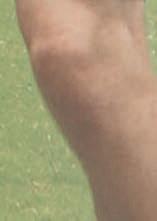



















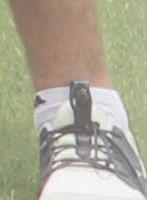





































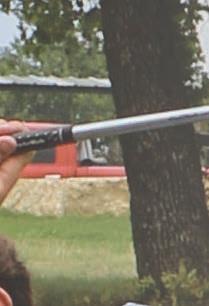
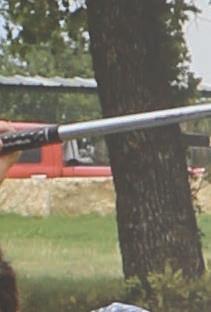













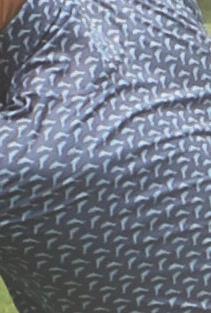












































































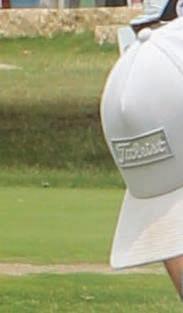
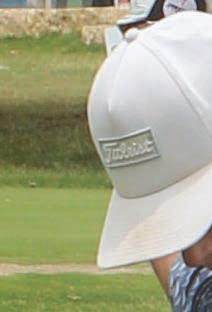


























































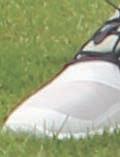




































































































































































































































































































































































































































































































































































































































































































































































































































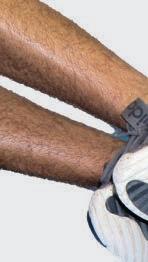

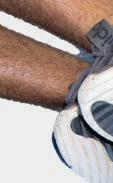






















































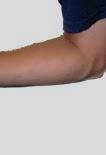






















































































































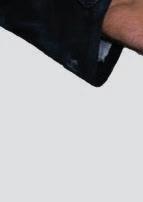
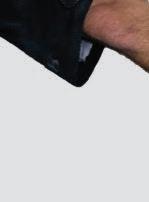




































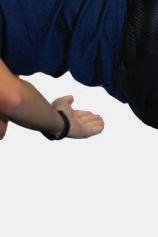














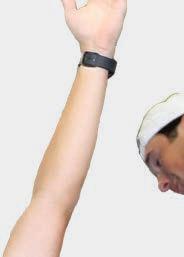







































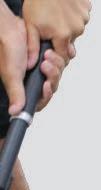





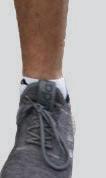
























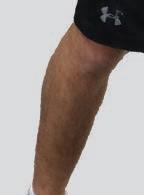
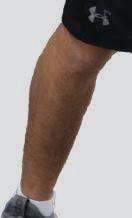

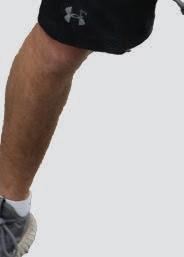

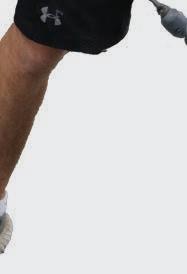















































































































































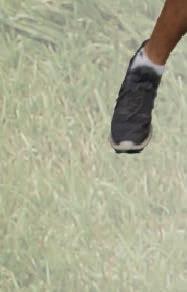

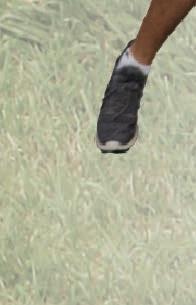




































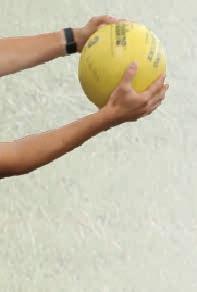




































































































































































































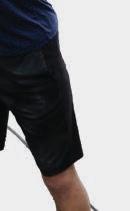


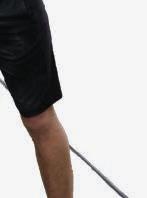











































































































































36 An HHN publication Thrive | Hamilton Healthcare System
DEMONSTRATED BY TYNER HAILE
PHOTOS BY KIM HINTON
fitness
Garrett Schwartz, DPT Mills County Physical Therapy
planks




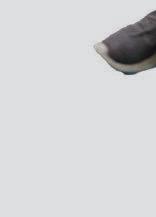














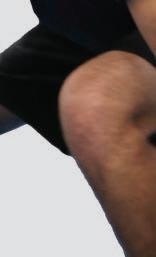






























































































































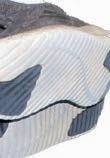
























































































































Start on knees and progress to toes. Engage abdominal and glute muscles. Avoid dropping the hips or sticking your rear in the air. Aim for 20 to 30 seconds for two to five sets. This improves overall core strength, allowing all other parts in a golf swing to work efficiently.


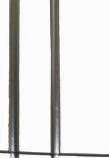





Resisted core rotation












































































































































































































































































































































































































































































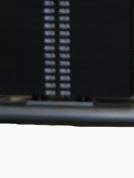





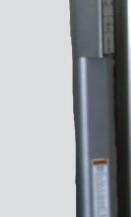






























































































































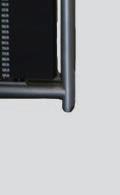

















































































































































































































Use a resistance band or the cable machine for resistance. In a half-kneeling stance with the lead side knee flexed and the foot placed flat, bring the band or cable across at chest height. Rotate torso and arms as one while controlling the resistance and slowly come back. Squeeze the quadriceps of the outside knee while the outer foot is pressed into the floor for stability. Aim for 10 reps each side with two to three sets. Increase the resistance or weight as needed. Focus on good mechanics. Start with hands close to the chest and build up to extending the arm away from the chest at 90 degree angle of the shoulders.
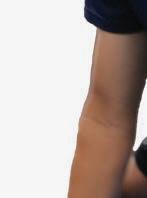














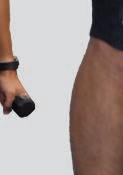











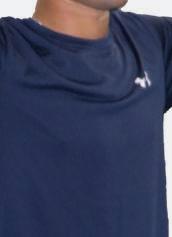





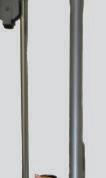













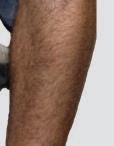



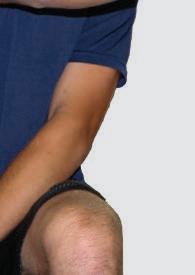








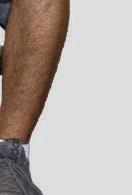

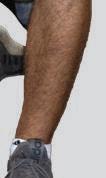





Lateral lunge









This is an activity that will increase overall strength to improve the weight shift in your golf swing and flexibility in the hips. Start with feet together and step out wide to the right, sit into the right heel and then come back to starting position with the feet shoulder-width apart. Repeat to the left. It is important to keep toes straight at all times and keep the opposite leg straight. Aim for two to three sets of10 to 12 reps.












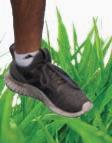




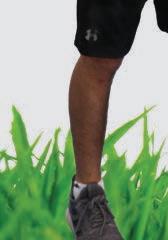
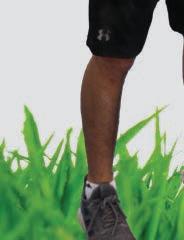





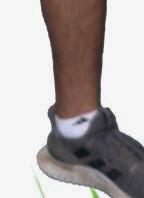













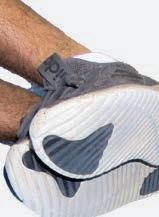
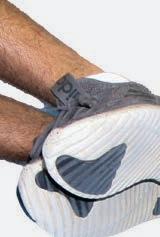





Dumbbell raises









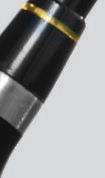








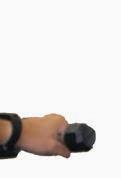














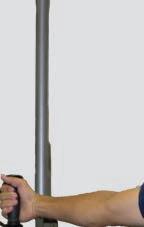



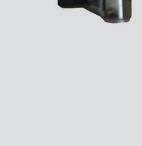















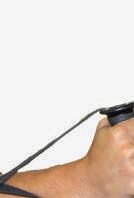







A lot of shoulder injuries can come from golfing. Prevent by strengthening your rotator cuffs. Using a light dumbbell, one to five pounds, stand upright with neutral back position, raise arms up with a 45-degree angle about shoulder to forehead height. Complete two to three sets of 10 to 12 reps each.






































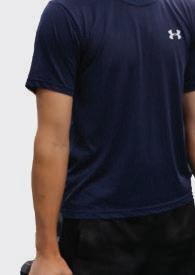
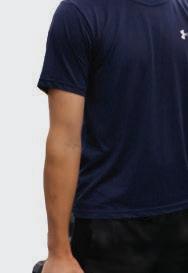













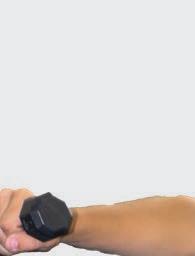
























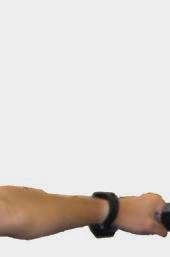








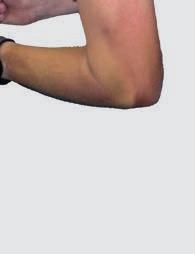







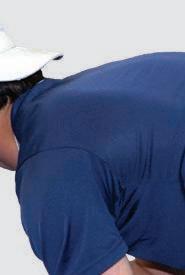












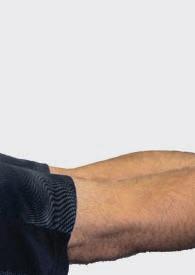















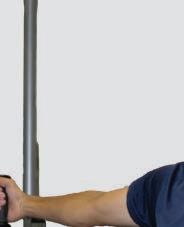































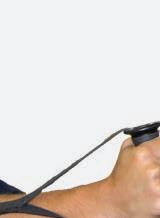



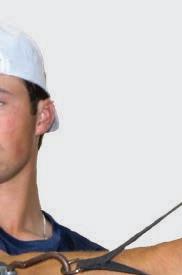
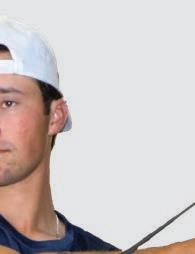

































































































































































37 Hamilton Healthcare System | Thrive An HHN publication Swing
BY KYMBIRLEE JESCHKE
stress test is a valuable tool commonly used to identify cardiac issues. While it is quick and non-invasive, traveling out of town to have a stress test can be inconvenient.
Rural Central Texans can now have stress testing completed at Hamilton General Hospital.


“We can do it here,” said Libby Skaggs, RN, who oversees stress testing at HGH. “The same cardiologists from Waco interpret the test, and your primary care provider receives the results here.”
Stress tests are commonly ordered for surgical clearance or to detect heart issues when non-emergent symptoms are present, like lightheadedness, rapid or irregular heartbeat, shortness of breath or mild chest pain.

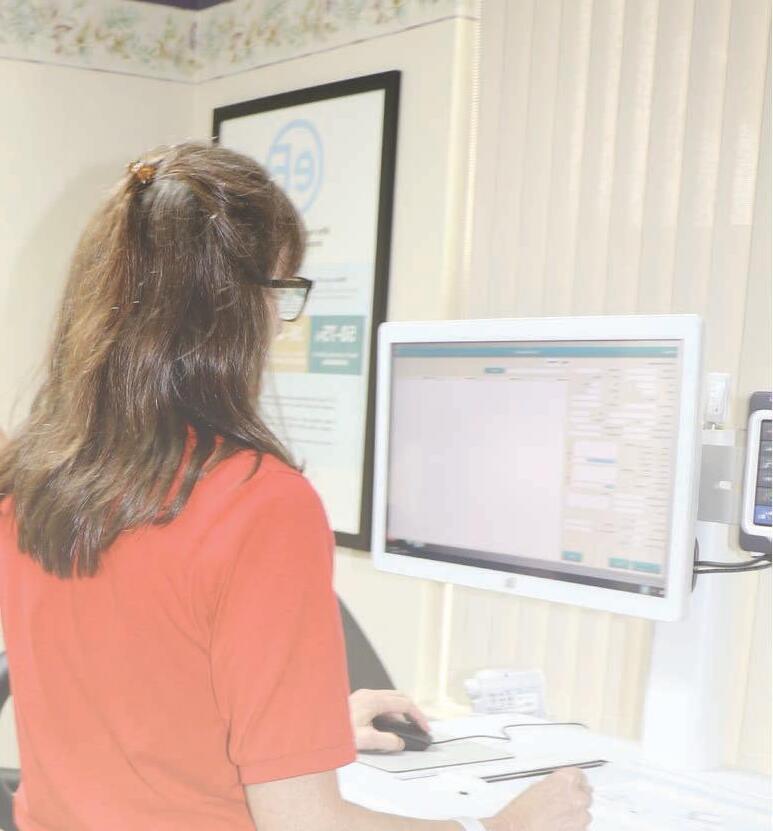
Tests are ordered by a physician and scheduled through radiology. They are



Stress Test
performed at HGH and sent to Waco Cardiology for reading.
HGH performs three kinds of stress tests: Plain Treadmill – During this test, the patient gets on a treadmill and exercises until they reach their target heart rate, which is based on heart, weight and age. Their heart is monitored through the process by an electrocardiogram (EKG), and blood pressure is also monitored.




Treadmill with nuclear scan – In this test, when the patient hits their target heart rate, they come off the treadmill and a safe, low level radioactive isotope is injected allowing a camera to see the blood flow through the heart after exercise. Skaggs assures patients that there are no side effects. “It’s a good way to get great pictures,” she said.
Lexican – The patient sits in a recliner monitored by EKG while an injection is administered. “You sit in a chair and your

insides run a marathon,” said Skaggs. This option is often used for patients that are not physically able to walk on a treadmill.
“Stress tests are generally safe,” said Skaggs. “Any time we do testing of the heart, we take it very seriously.”
Skaggs, who moved to Hico in August, is no stranger to cardiac medicine. She brings with her 18 years of experience in the cardiac tower at Texas Health in downtown Fort Worth.
The most important tip about having a stress test is to refrain from caffeine intake for two days before. No coffee, tea, colas or chocolate.
While testing times vary by individual, Skaggs said most tests take 15 to 20 minutes. The nuclear scan could take about an hour to hour and a half.
“It’s convenient,” she said. “You can come in at 9 a.m. and be out the door by 11 a.m.”

38 An HHN publication Thrive | Hamilton Healthcare System
services





Signs of Sleep Apnea
• Snoring that occurs three or more times per week

• Very loud or bothersome snoring


• Snoring with gasping, choking or snorting sounds


• Obesity or recent weight gain
• Daytime drowsiness
• Lack of focus or mental sharpness
• Morning headaches and congestion
• High blood pressure
• Nighttime teeth grinding
• Frequent nighttime urination

Better sleep is a phone call away! Talk to your doctor or call 254-386-1699 Hamilton Healthcare System Sleep Center.
pnea is a pause in breathing during sleep and is potentially serious in which breathing repeatedly stops and starts. If you snore loudly and feel tired even after a full night’s sleep, you might have sleep apnea.
David Rodriguez, BA, RRT Sleep Lab Coordinator
If snoring is disturbing your sleep or you don't feel rested after a full night's sleep, it is important to talk to your physician. Solutions to improve sleep quality and overall health are available.
During obstructive sleep apnea, the throat or airway muscles relax, allowing the tongue to block the throat. This causes a pause in breathing that may last longer than ten seconds and result in snoring, gasping and/or choking.
Inadequate oxygen during an apnea event signals the brain to wake up so breathing can start again. This may cause full awakening, or change the stage of sleep to a lighter, less restorative phase.
Sleep apnea events tend to occur most frequently during rapid eye movement sleep, called REM.



When breathing is obstructed, the muscles of the diaphragm and chest increase their effort to inhale. This can cause gasping and choking and for the apnea sufferer awakened from sleep, a feeling of suffocating. In an effort to receive sufficient oxygen, the brain causes a full or partial awakening. If sleep apnea is severe, this may happen dozens of time each night.
The lack of oxygen and deep, restorative sleep can have a significant effect on the physical and mental functioning of sleep apnea sufferers.
Sleep apnea diagnoses in children are increasing due in part to increasing levels of obesity. Known as pediatric obstructive sleep apnea, the disorder is nearly always a result of a blockage of the airway.
If you have any questions or concerns about your sleep problems, talk to your physician.

You may also call Hamilton Healthcare System Sleep Center, located at 814 E. Boynton St., at 254-386-1699.








David Rodriguez attended Creighton University School of Allied Health Professions Respiratory Therapist Program and is a graduate of the University of Texas at Austin. With more than 30 years' experience in healthcare, he has held numerous positions in cardiopulmonary, respiratory care, sleep centers and cardiac and pulmonary rehabilitation.

40 An HHN publication Thrive | Hamilton Healthcare System Proudly serving Central Texans since 1991 (254) 386-8971 leehealthcare.com
Snoring When is it more than Annoying?
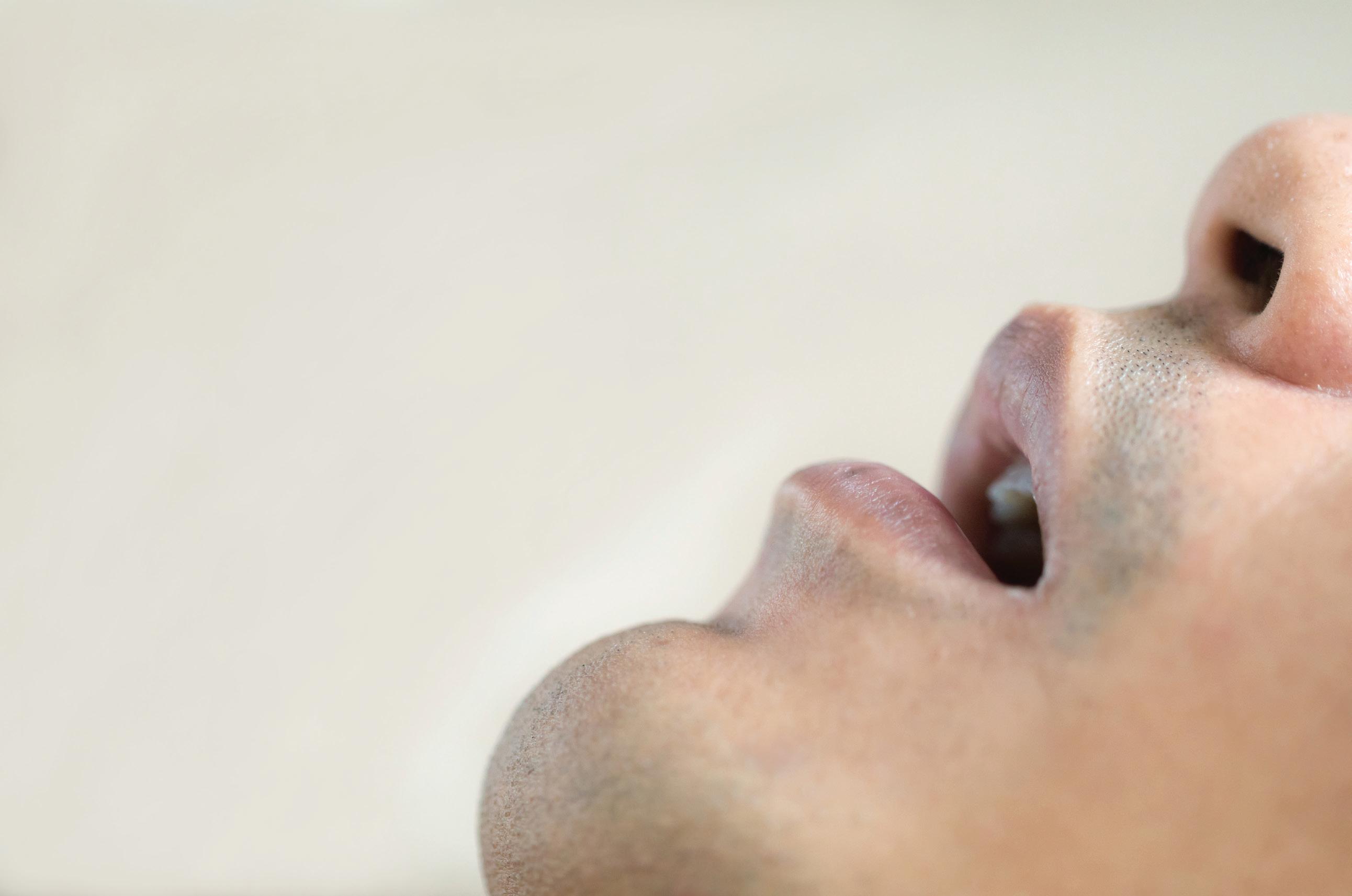
COMPOUNDING EXCELLENCE
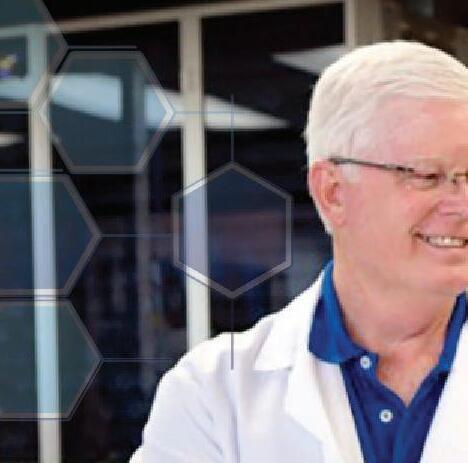

Our state-of-the-art prescription compounding facilities, experience in veterinary compounding, and warmly holistic approach truly set us apart. At McMahan Pharmacy Services, Inc., our reputation has been built by using the purest pharmaceuticals combined with the latest technology. Our dedication to providing customers with continued excellence is inherent in our service and preparations.




CHRONIC CARE MANAGEMENT













Chronic Care Management is care coordination for patients with two or more chronic medical conditions. Chronic Care Management helps the patient reach better health outcomes and quality of life. By focusing on your chronic care conditions more often, you decrease the risk of trips to the emergency room, hospital, and declining health status.

41 Hamilton Healthcare System | Thrive An HHN publication
Individually tailored SERVICES for a healthier, happier YOU. mcmahanpharmacy.com • Chronic disease education and support to reach health goals. • Preventive care (ie. Immunizations, lab work) • Medication Reconciliation • Regular communication • Personal attention for your health care needs
Provide 24/7 access to care 1503 W. Front St, Goldthwaite, Texas 325.648.2484 Mon-Fri: 8:30-5:30pm • Sat: 8:30am-12pm For more information contact Sammie Montgomery, Pharm.D. at 325-648-2484 or sammie@mcmahanpharmacy.com prevention
•
57% of Men Snore (40% of women & 27% of children)
HealingEnergy
 BY MARIA WEAVER
BY MARIA WEAVER
yler Vandermeer’s clients get a charge out of her care.
Literally.


Tyler, a registered nurse who specializes in emergency care, owns OmniTherapy by Tyler in Hico and treats her clients’ pain with electrical microcurrents, targeting the ions to relieve pain.


“Many folks struggle with chronic pain and are just at the end of their rope with pain medications,” Tyler said. “Similarly, there are people who struggle with chronic pain that do not want to be on pain medications because of the side effects.
“Electrical microcurrents can offer them relief so they can enjoy a better quality of life.”

Hamilton’s Johnny Clepper has had good results working with Tyler.
A Parkinson’s patient, he sought ways to control his tremors.

Parkinson’s is a brain disorder that causes unintended or uncontrollable movements such as shaking, stiffness and difficulty with balance, coordination, walking and talking.
By targeting the ions – sodium, potassium, calcium and magnesium – which have specific electrical charges, Tyler was able to temper his tremors.
“I don’t have the tremors so much, as you
can see,” Johnny said. “Sometimes I feel like I have them on the inside. It feels like my body is shaking inside.





“Since I’ve been going to see Tyler, I don’t get that feeling as often.

“It also helps with my leg pain.”
Tyler, a barrel racer from South Carolina, discovered the therapy when her mare had a career-ending injury.
She took her to Acuscope by Ashley in Stephenville to help her get well and let her retire in the pasture. But within three weeks, the horse was stronger, and her wounds closed up.
“When I brought her home, she could run and play in the pasture without a sore step,” Tyler said.

Within months, the horse was cleared for exercise, and within a year they were competing and winning.
Putting two and two together, Tyler reasoned that if it worked for horses, it could work for humans. She was right, and after research and training, she became certified in the Acuscope and Myopulse system, which has been around since the 1970s.
As an ER nurse, Tyler had seen many injuries and chronic pain conditions.

“I want to help my patients more on the other end of the emergency room, and that is what started my journey and education with microcurrent therapy.


“I am also very passionate about caring for acute injuries. I enjoy helping athletes get back to their peak performance and
helping people get back to their lives without pain.
“God created our bodies to function off of specific electrical frequencies,” she said. “Most people are familiar with the ability to look at the electricity in the heart with an ECG/EKG or take a look at the brain function with an EEG.
“Every cell in the body moves electricity and can have impedances, causing the area to heal slowly or not heal at all, which often leads to chronic pain.
“Microcurrent therapy is a noninvasive, painless procedure that promotes healing and has often been successful with issues that have not responded to other treatments and/or medication,” Tyler said.
“By evaluating the feedback, the correct current can be applied so the cells can be corrected to function optimally, which means allowing the tissue involved to begin the healing process in a faster, more efficient manner.
“We can take readings that will tell if there is stagnant/under-active cell activity preventing cell turnover and repair. This often is where the chronic pain comes from, and when treated according to the amount of stagnancy, we see quick improvement and results.
“No matter how big or small your issue is, if it impacts your day-to-day life, it is worth getting checked out,” she said.
“I’ve had chronic pain for years,” said Mickey Kinsey of Hico. “I’ve been seeing Tyler the last few months, and it has helped.
42 An HHN publication Thrive | Hamilton Healthcare System
Tyler Vandermeer, RN OmniTherapy by Tyler
I would recommend her.”


Tyler works with people of all ages, from student athletes to retired veterans, with all kinds of ailments, from nerve pain to sports injuries, old injuries and chronic pain. She also offers skin rejuvenation.





She helps patients from all over central Texas with issues like neuropathy, surgery recovery, back pain and general localized pain.



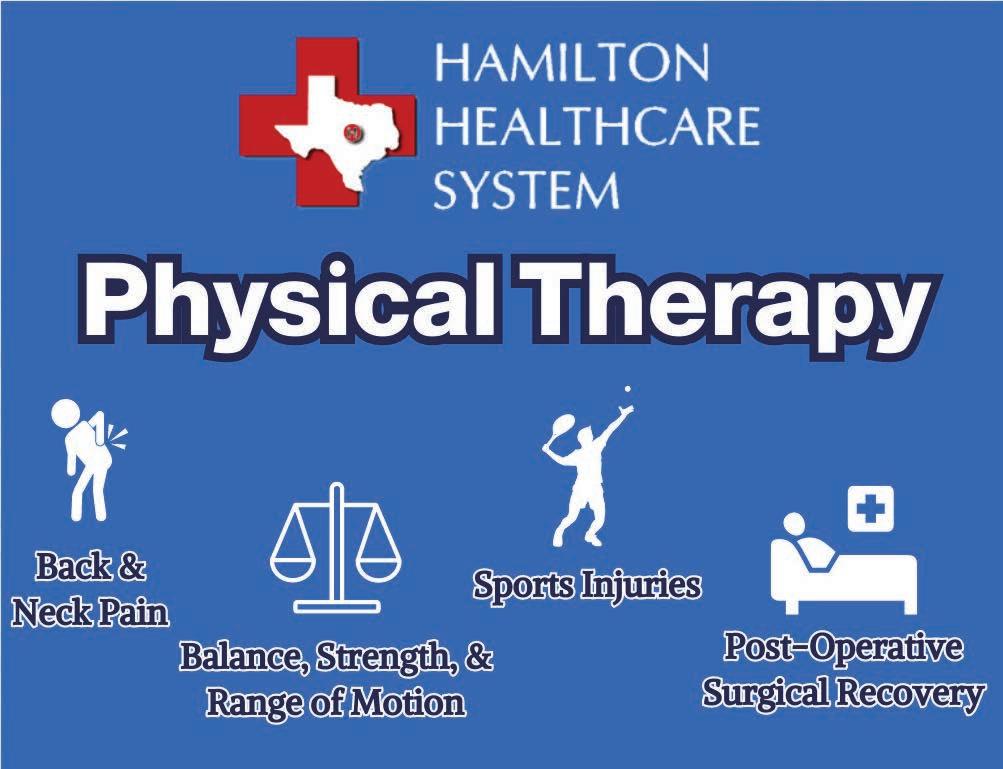

“I started this ‘different’ or ‘alternative’ exploration to give people another option for their healthcare, and I am blown away by the blessings this has brought me and the people I have gotten to help,” she said.
For information, call 803-389-7480 or email omnitherapy bytyler@gmail.com.








43 Hamilton Healthcare System | Thrive An HHN publication integrative
Serenity Garden





















My sincerest gratitude goes out to the wonderful auxiliary for their work in the healing garden. The garden is a wonderful asset to our hospital. Almost without exception, when my patients are medically ready and can safely do so, I encourage them to spend some time each day in the healing garden. The emotional and mental toll that can come after major surgery or serious illness can sometimes leave a person feeling hopeless or depressed. I have seen many patients' spirits lifted and their recovery accelerated by getting out of their hospital room and spending time in the garden. There really is something therapeutic about sitting outside, breathing fresh air and looking at the blue sky, all while surrounded by beautiful plants, trees and flowers. I hope the volunteers who have done so much to make the garden what it is know that they are making a positive impact to our hospital and community.



44 An HHN publication Thrive | Hamilton Healthcare System
Ryan Adams, M.D. Hamilton General Hospital Surgeon
Serenity at


HGH

ocated on the north side of Hamilton General Hospital, the Serenity Garden provides healing and comfort to patients, their families and hospital staff. Patient rooms overlook the garden while ambulatory patients can enjoy a walk or a rest on the bench. The pergola provides a shaded area for reflection.
A TRIBUTE WALK
leads through the garden honoring, memoralizing and remembering loved ones and those who have contributed to the hospital and community.



THE


CHILDREN’S MEMORIAL
adds an element of beauty and peace that includes a water feature and beatiful rock wall remembering and honoring lost children who will be forever loved and cherished.


A Hamilton Healthcare System Auxiliary Team project, the Serenity Garden is maintained by the volunteer group committed to making a difference in the lives of visitors and the healthcare team.


Honorary and memorial tiles for both the Tribute Walk and Children's Memorial are available for purchase for placement in the Serenity Garden. Forms can be obtained at the Hamilton General Hospital Administration office or by calling 254-386-1950.


45 Hamilton Healthcare System | Thrive An HHN publication volunteers
General Assistance
211 Texas Help finding services/resources
www.211texas.org
211 or 1-877-541-7905
4 HGHH
TX 76531
Crisis Text Line
www.crisistextline.org

Text HOME to 741741 to connect with a Crisis Counselor Free 24/7 support at your fingertips
Texas Health & Human Services Office
Medicaid, Food Stamps, Medicare Savings Programs
(254) 386-8965
Hamilton Co. United Care Help w/ food & clothing
254-206-7371
Hamilton Community Center
Daily free lunches
254-784-3358
Hill Country Community Action
1-866-372-5167
Hamilton TX Helping Hands find them on Facebook
Aged & Disabled, Veterans
Texas Health & Human Services
Long Term Care Services




1-855-937-2372
Area Agency on Aging | Aging & Disability Resource Center




Services, Info & Referral for Aged, Disabled & Veterans
254-770-2330 or
1-800-447-7169
Hico Senior Center 254-796-4488
Mills County Senior Center
325-648-3122
Mental Health & Developmental Disabilities Central Counties Services
254-386-8179
Crisis Hotline 1-800-888-4036
Adult Substance Abuse
Texas Health & Human SvcsBluebonnet Trails



1-800-841-1255 (Crisis)
1-844-309-6385 (Main)
Women & Children
Women & Children
Texas Health Steps
Services for Pregnant Women, Children on Medicaid Birth-20 yrs
1-877-THSTEPS (1-877-847-8377)
Texas WIC Women, Infants, Children
1-866-907-0080 TexasWIC.org
MEDICARE SERVICES
Texas Medicaid Transportation
1-877-MED-TRIP
(1-800-633-4227)
The Hop Rural Transit
254-933-3700 ext. 5005 or 1-800-791-9601 ext. 5005
Mental Health
Texas Health & Human Services

COVID 19 Mental Health Support Line
1-833-986-1919
Dept. of Protective & Regulatory Svcs. ABUSE & NEGLECT HOTLINE 1-800-252-5400 27 TEXAS ONCOLOGY 888-864-4226 TexasOncology.com 31 MONCRIEF CANCER INSTITUTE 888-233-8620 moncrief.com 33 SOLARIS 1-888-3SOLARIS solarisfamily.com 35 FOCUSED CARE 254-386-3171 fpacp.com 40 LEE HEALTHCARE & MEDICAL SUPPLY 254-386-8971 leehealthcare.com 41 MCMAHAN PHARMACY 1503 W. Front, Goldthwaite 325-648-2484 45 HAMILTON EDC HamiltonTexas.com 45 HAMILTON CHAMBER OF COMMERCE 254-386-3216 HamiltonTexasChamberofCommerce.com 47 PATHWAY 254-785-3278 usapathway.com 28 RURAL HEALTH CLINIC 34 HEART HEALTH 38 REAL RURAL CARE 38 MAMMOGRAPHY 39 SWING BED 43 CENTRAL TEXAS EYE CARE 43 PHYSICAL THERAPY 48 5 STAR RATING
(1-800-633-4227) MEDICAID HOTLINE 1-800-335-8957 Texas ADVERTISERS directory Be a part of Thr ve Call Kym at 254-386-3145 or kym@hhnpaper.com Sign up at carterbloodcare.org

of Insurance 1-800-252-3439 Texas We’re coming to Hamilton! July 20 • Sept. 21 12-6 p.m. @ HGH Parking Lot Aug. 30 • Nov. 7 @ Hamilton High School
46 An HHN publication Thrive | Hamilton Healthcare System
• • •
• • •
Transportation
• • •
• • •
• • •
254-216-9211 Hamilton Early Childhood Intervention 254-773-6787 Hamilton Early Head Start 254-386-8936 • • • Domestic Violence HOPE – Tri-Rivers Domestic Violence Emergency Shelter Emergency Shelter & Assistance for DV Survivors 254-865-2151
Social Security Administration 1-800-771-1213
HOTLINE 1-800-MEDICARE
Department
RAY’S CITY DRUG 105 E. Henry, Hamilton 254-386-3121
PECAN CREEK OUTFITTERS 108
Hamilton,
COMMUNITY RESOURCES pecancreekoutfitter.com 6 WACO CARDIOLOGY ASSOCIATES 254-399-5400 wacocardiology.com 15 OMNI THERAPY BY TYLER 803-389-7480 OmniTherapyByTyler.com 17 COMPANION IN-HOME SENIOR CARE 254-736-0294 companioninhomeseniorcare.com 19 MELANIE J FINANCIAL 254-386-4500 MelanieJFinancial.com 20 MC BANK 800-285-2216 mcbanktx.com 23 HYDRAHEALTH IV THERAPY 254-978-8338 hydrahealthivtherapy.com 25 JORDAN PHARMACY 254-386-3111 jordanpharmacy.com 2 PROVIDERS 3 TOP 20 HOSPITAL 10 CHRONIC CARE MANAGEMENT 13 SOLUTIONS BEHAVIORAL HEALTH 13 HICO CLINIC 15 FAMILY PRACTICE CLINIC OF MILLS COUNTY 16 EMERGENCY CARE 22 SURGERY
FOUNDATION PO Box 788, Hamilton, TX 76531 hamiltonhospital.org/hghh-foundation 5
5
E. Henry •














INTERNET - PHONE 254-785-3278 www.usapathway.com Live, local team dedicated to serving YOU!






















































































































































































































 BY KYMBIRLEE JESCHKE
BY KYMBIRLEE JESCHKE






























 Brayden Day
Brayden Day






















 BY GRANT LENGEFELD
BY GRANT LENGEFELD









































































 Carl G. Chakmakjian, D.O., FACP • Tyler W. Snedden, M.D.
• Thomas J. Harris, M.D. • Rachel Ramsey, NP, AOCNP Carlos A. Encarnación, M.D., FACP • Ofobuike N. Okani, M.D., FACP • Katie Bone, MSN, APRN, FNP-BC Dawn Turner, RN, FNP-C, AOCNP • Justin W. Wray, M.D., Ph.D.
Carl G. Chakmakjian, D.O., FACP • Tyler W. Snedden, M.D.
• Thomas J. Harris, M.D. • Rachel Ramsey, NP, AOCNP Carlos A. Encarnación, M.D., FACP • Ofobuike N. Okani, M.D., FACP • Katie Bone, MSN, APRN, FNP-BC Dawn Turner, RN, FNP-C, AOCNP • Justin W. Wray, M.D., Ph.D.




































































































































































































































































































































































































































































































































































































































































































































































































































































































































































































































































































































































































































































































































































































































































































































































































































































































































































































































































































































































































































































































































































































































































































































































































































































































































































































































































































































































































































































































































































































































































































































































































































 BY MARIA WEAVER
BY MARIA WEAVER





























































































